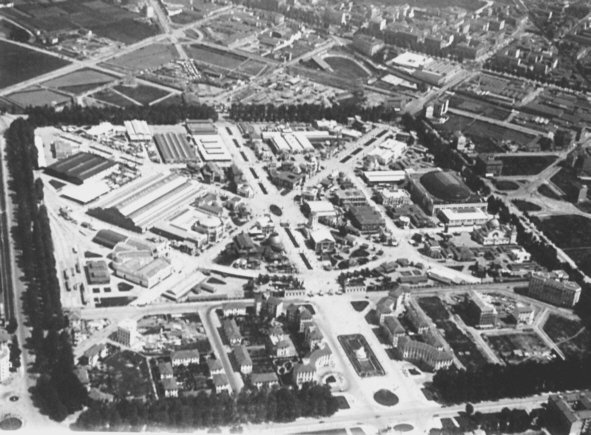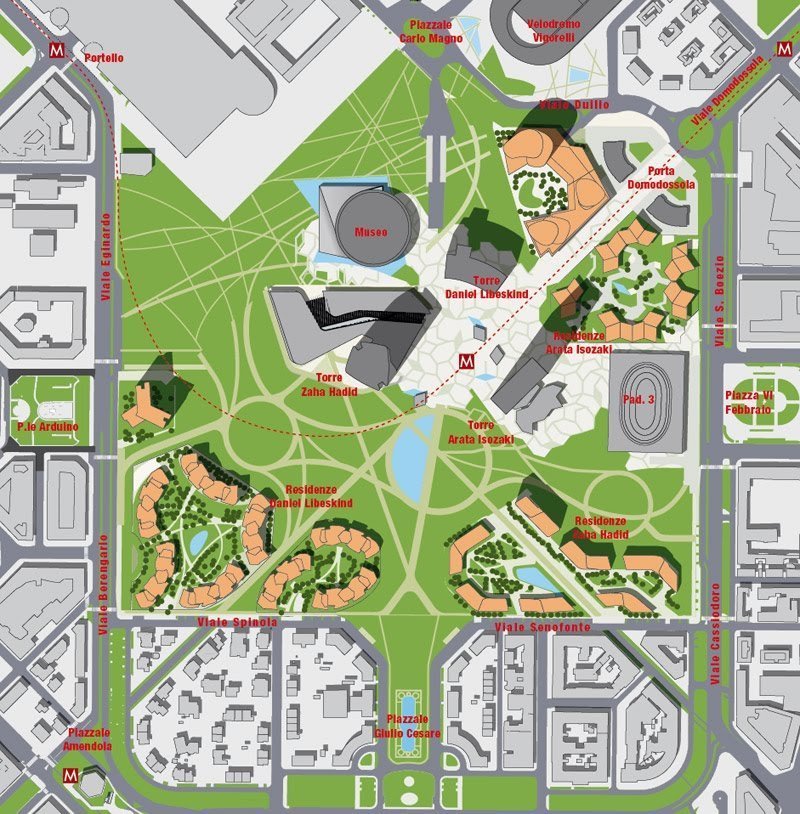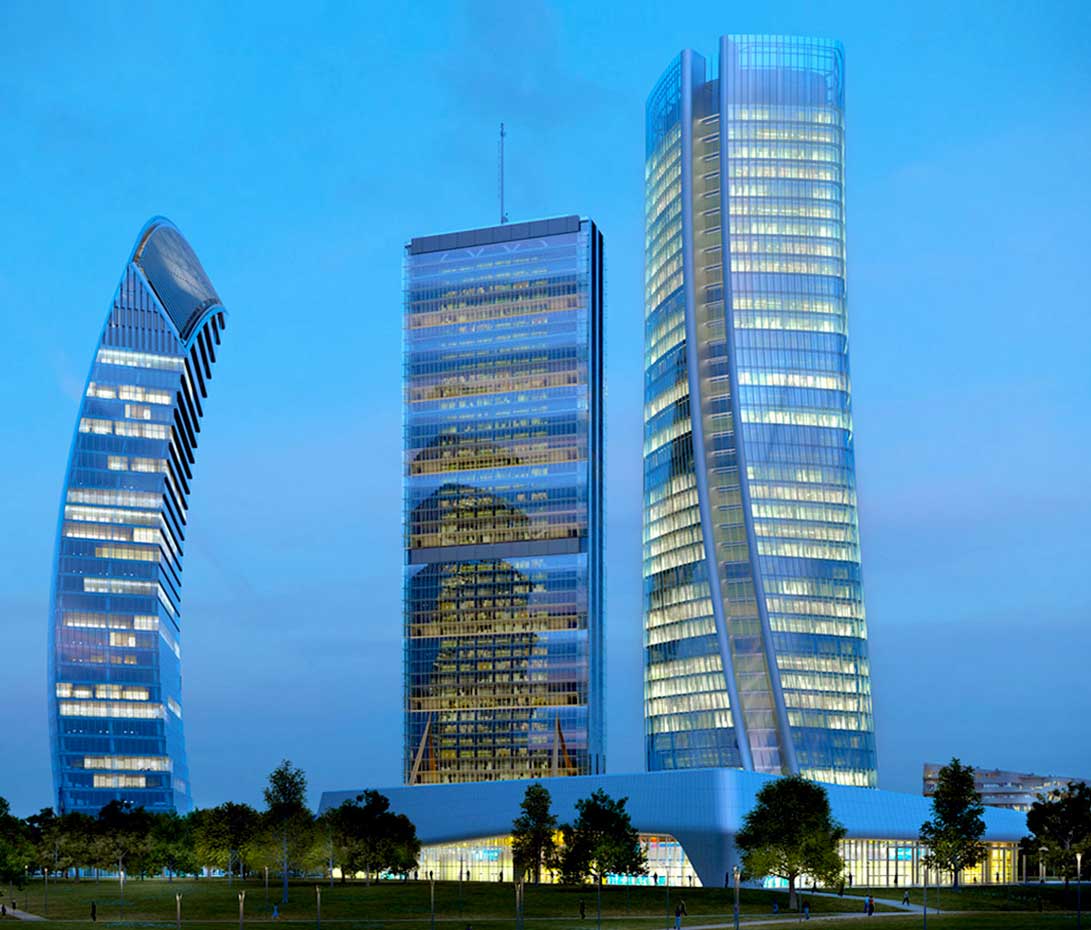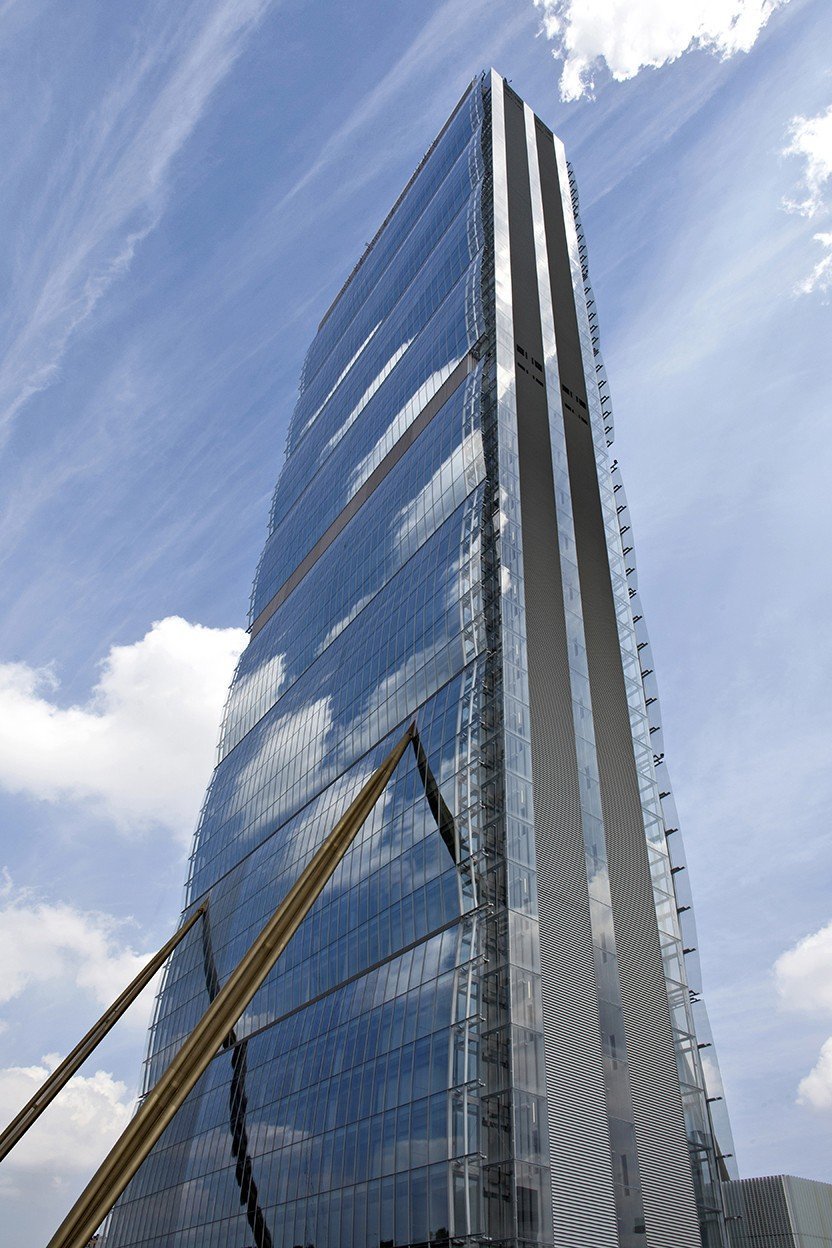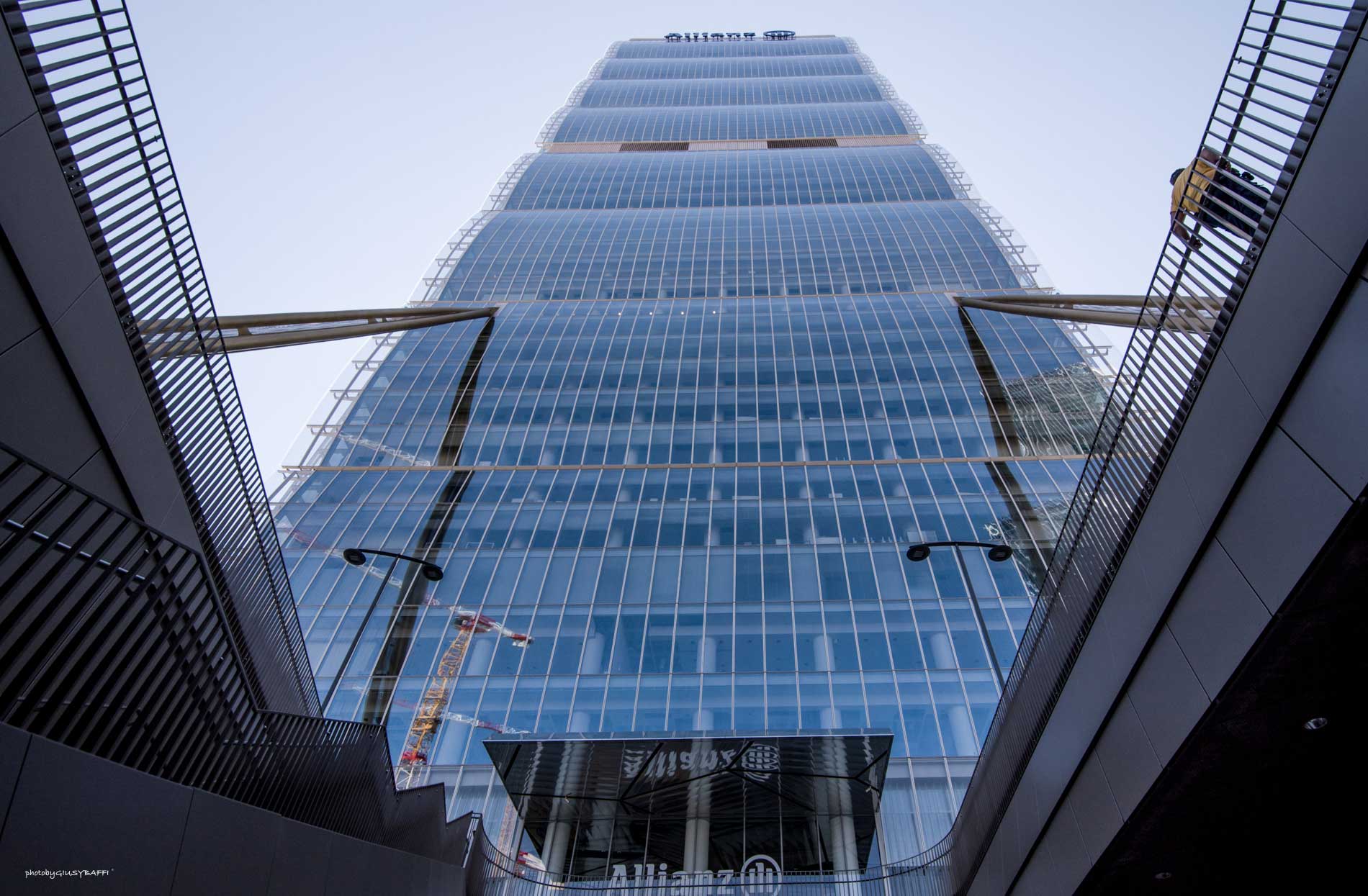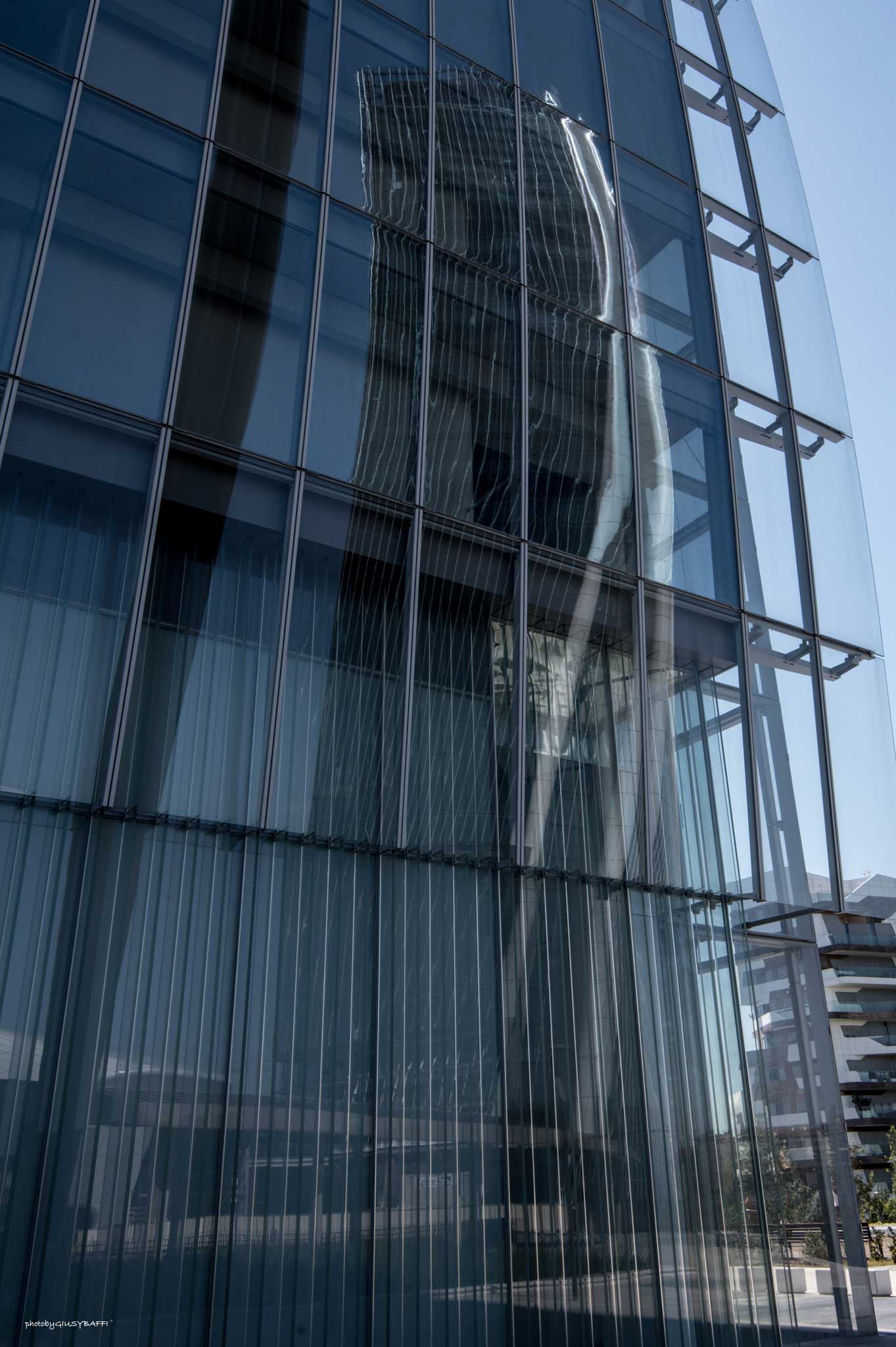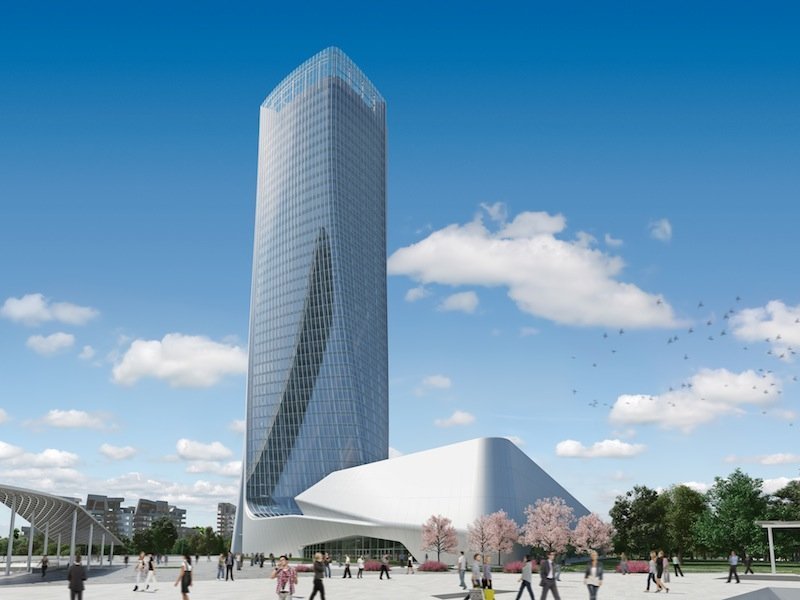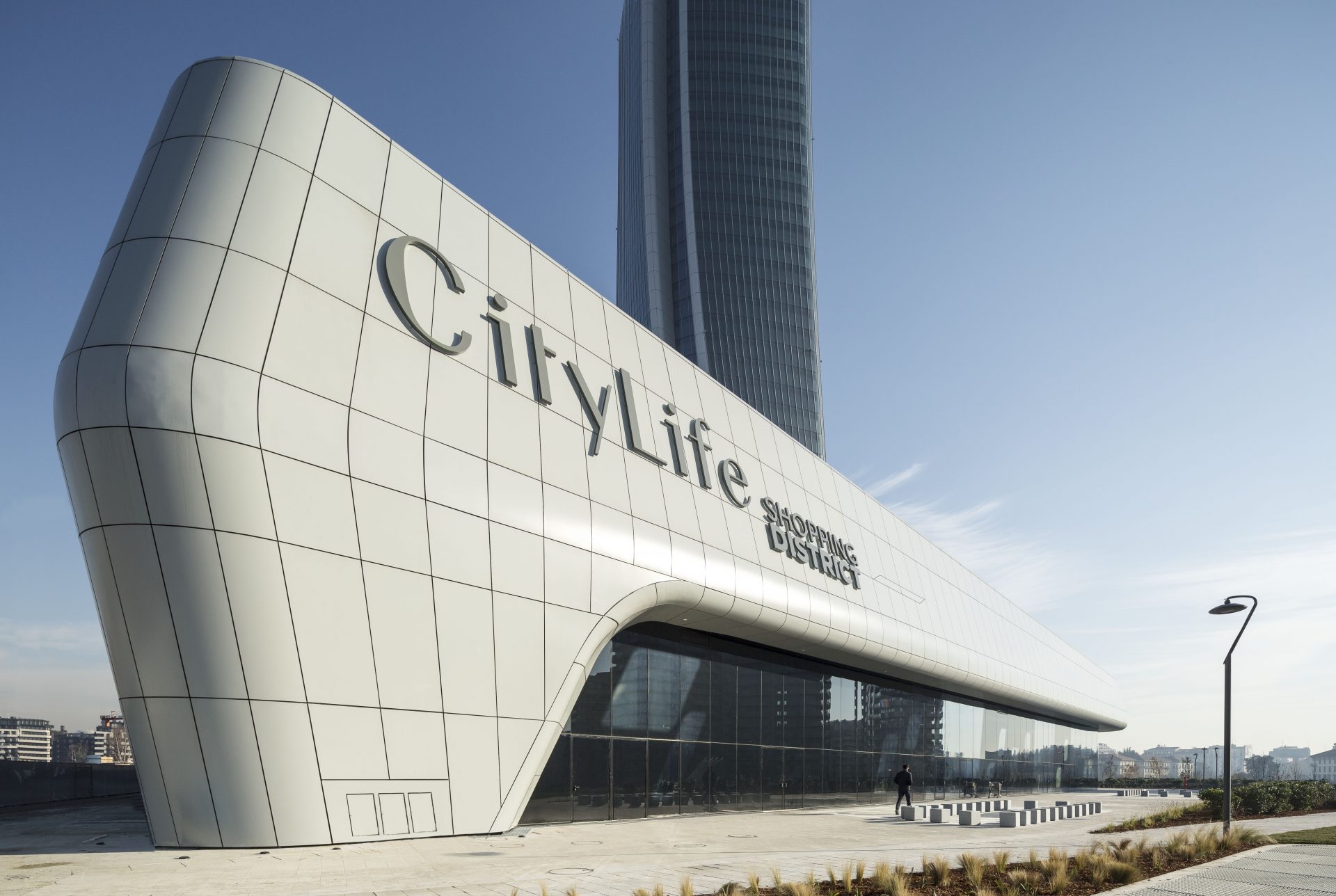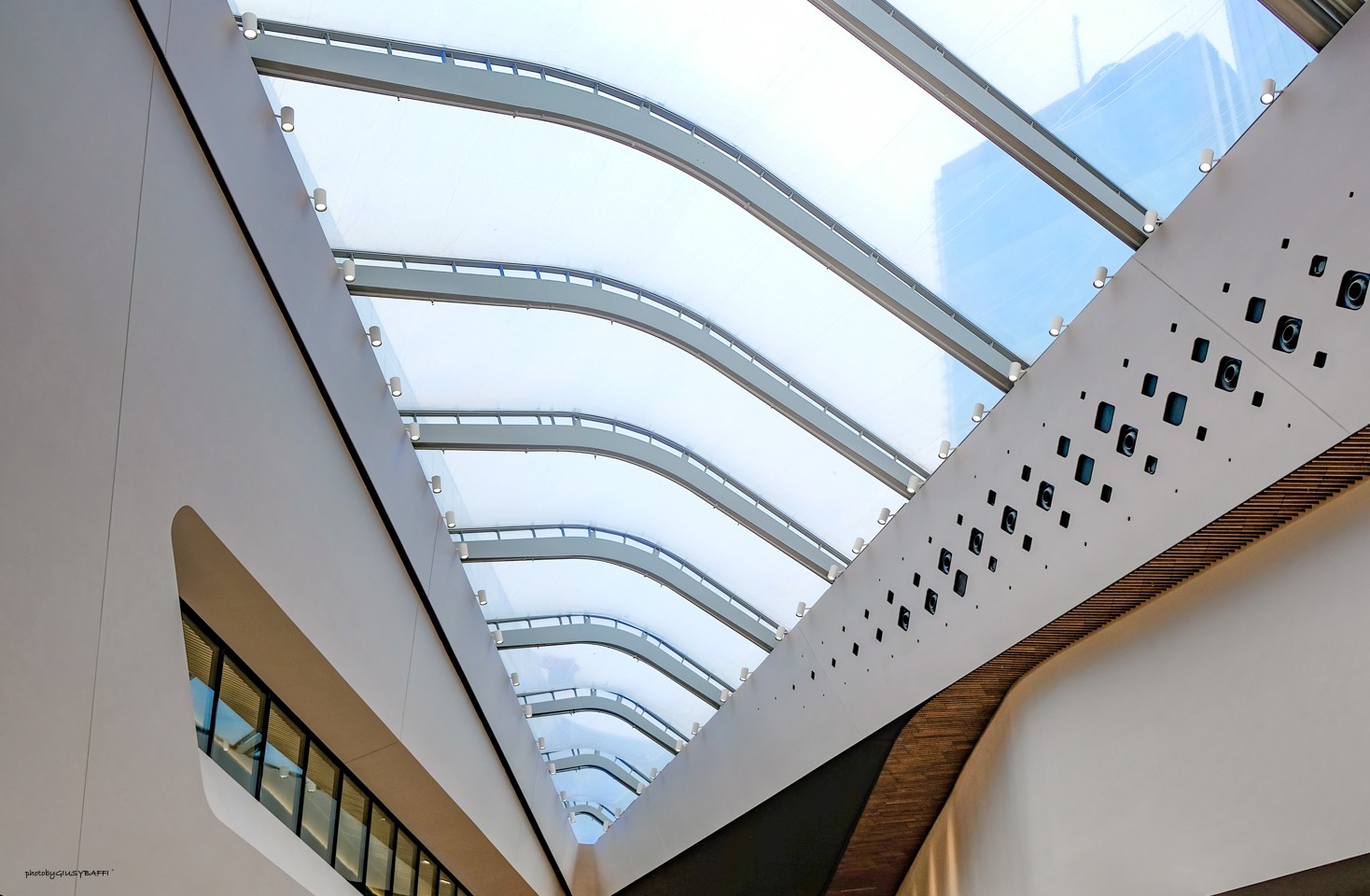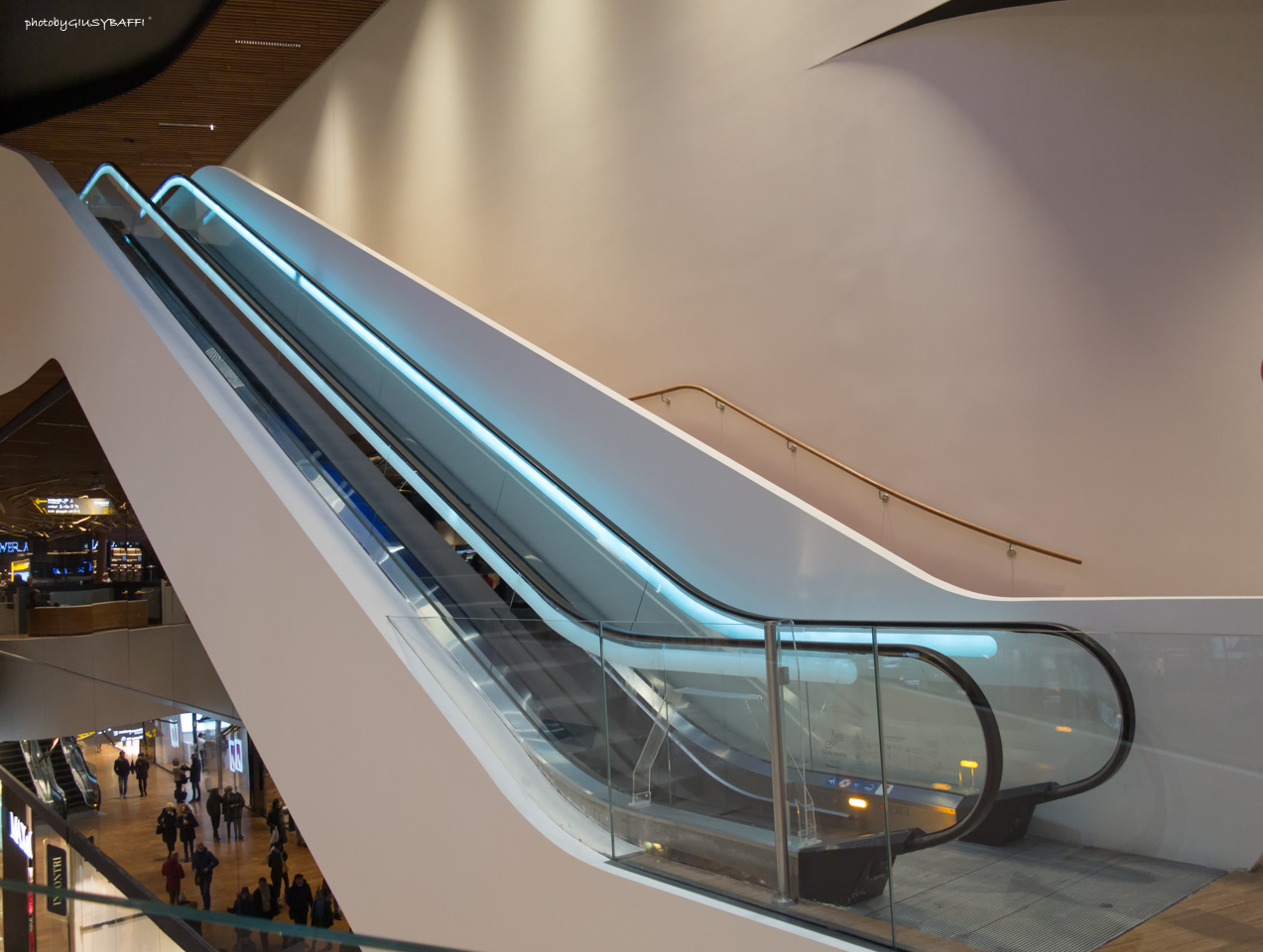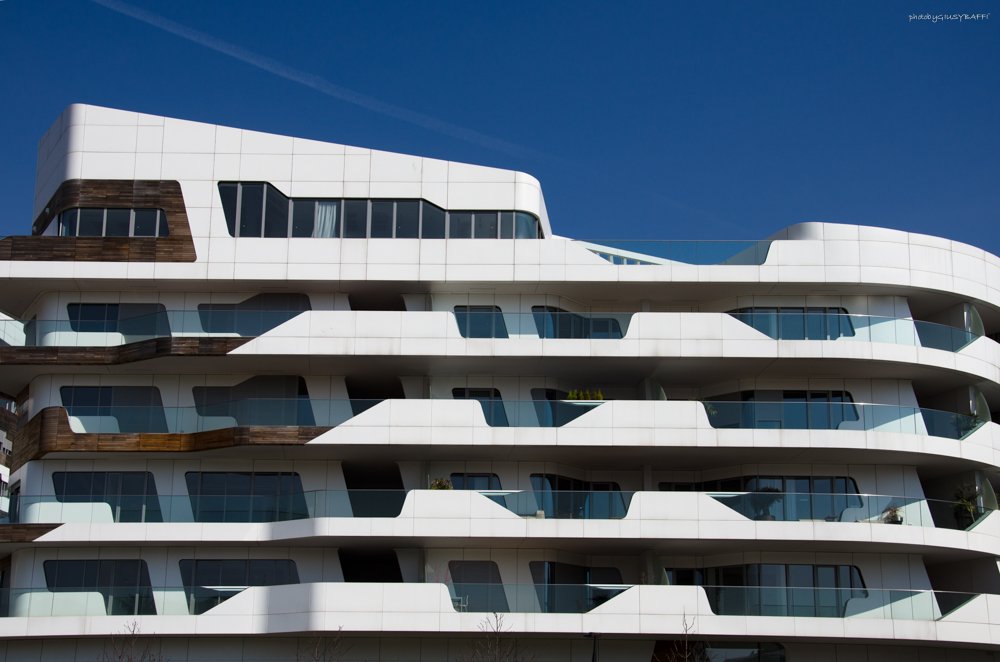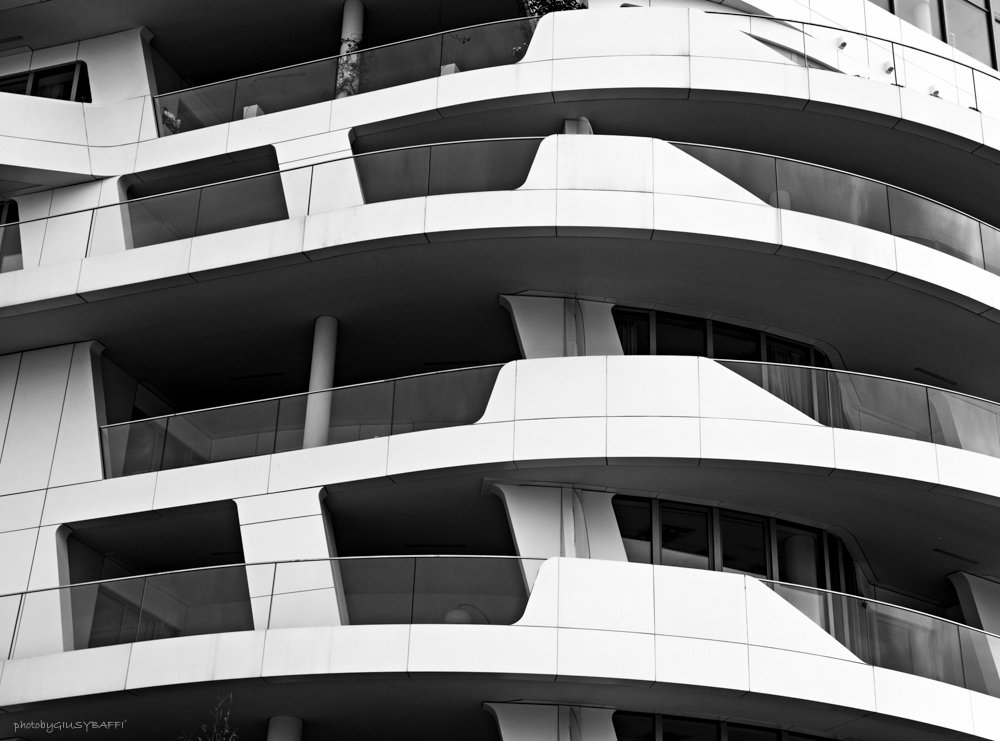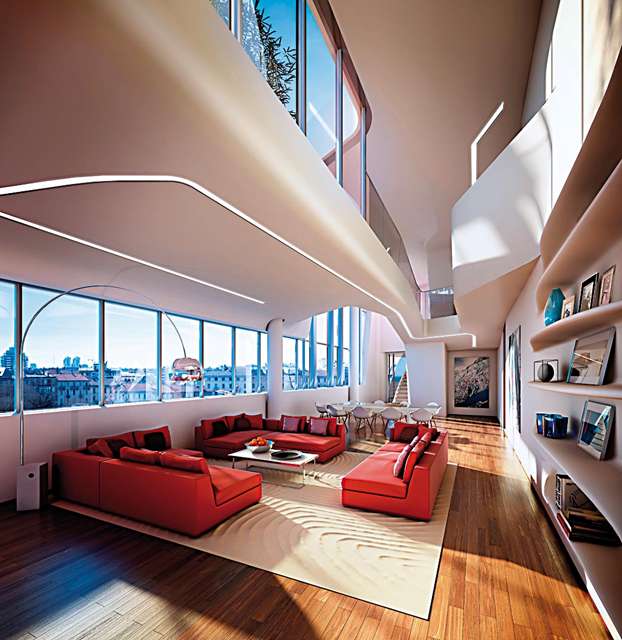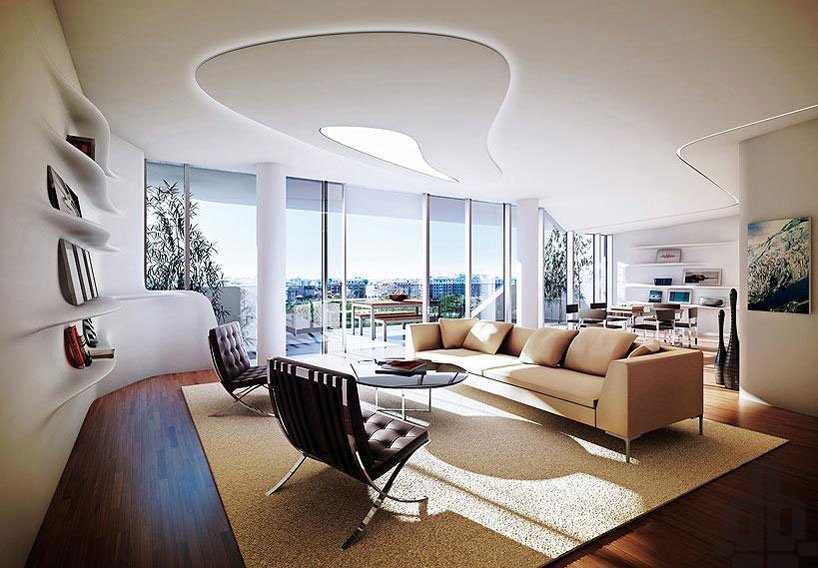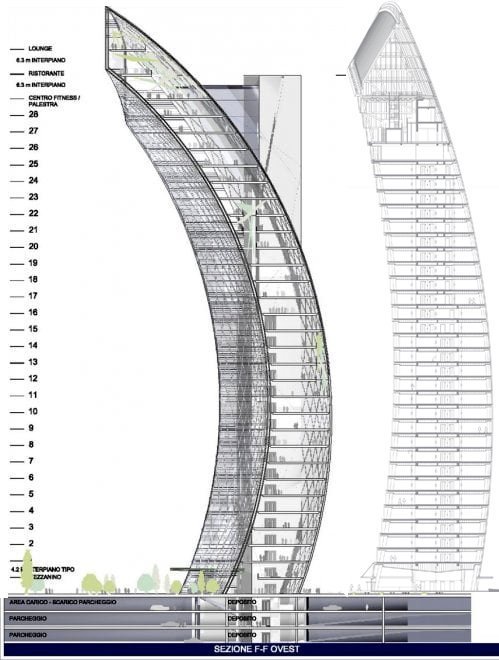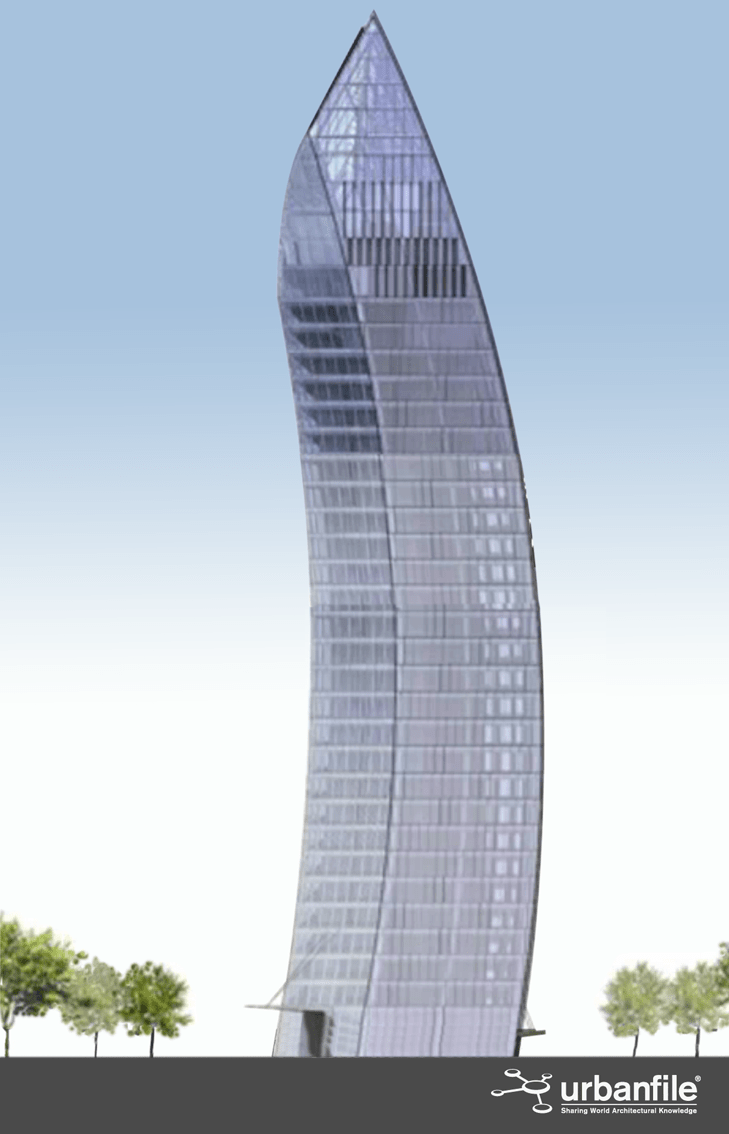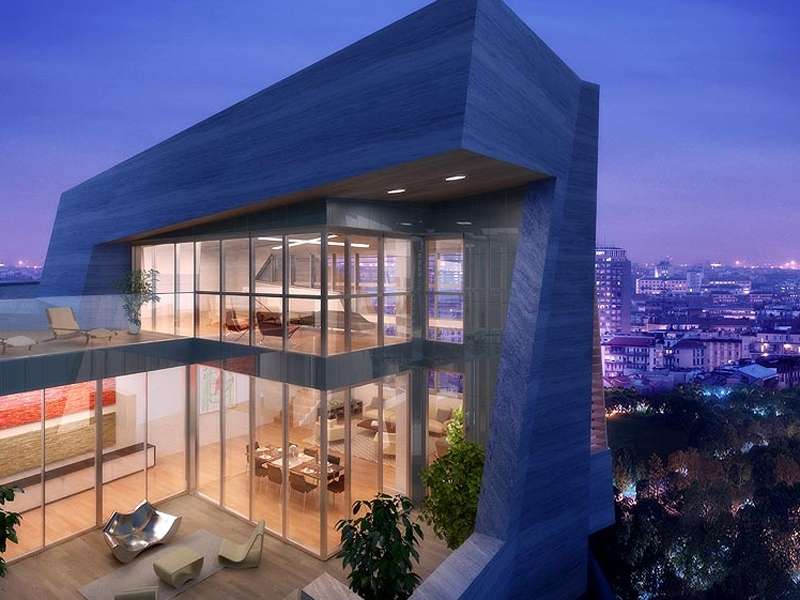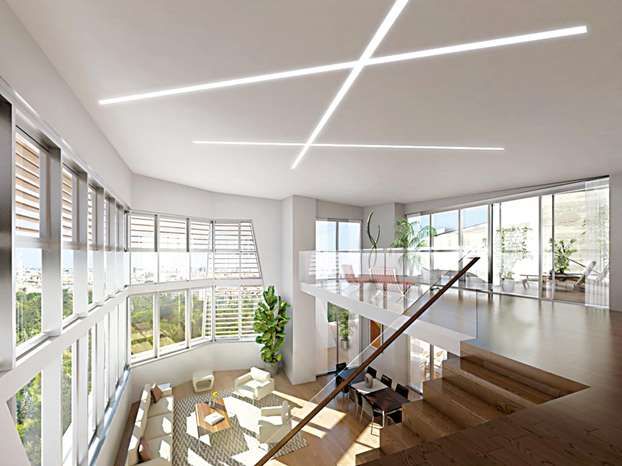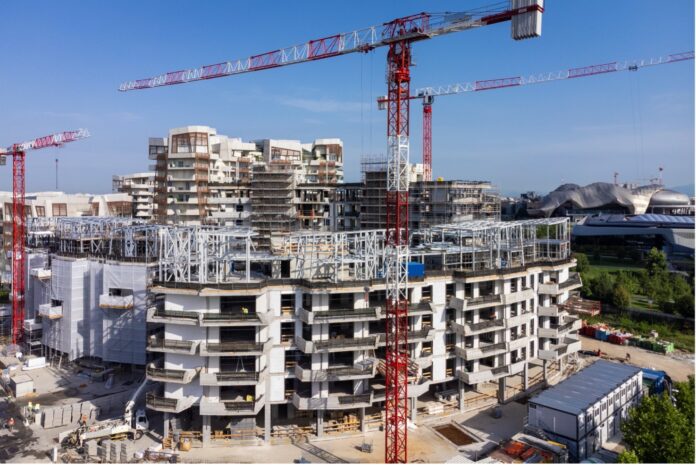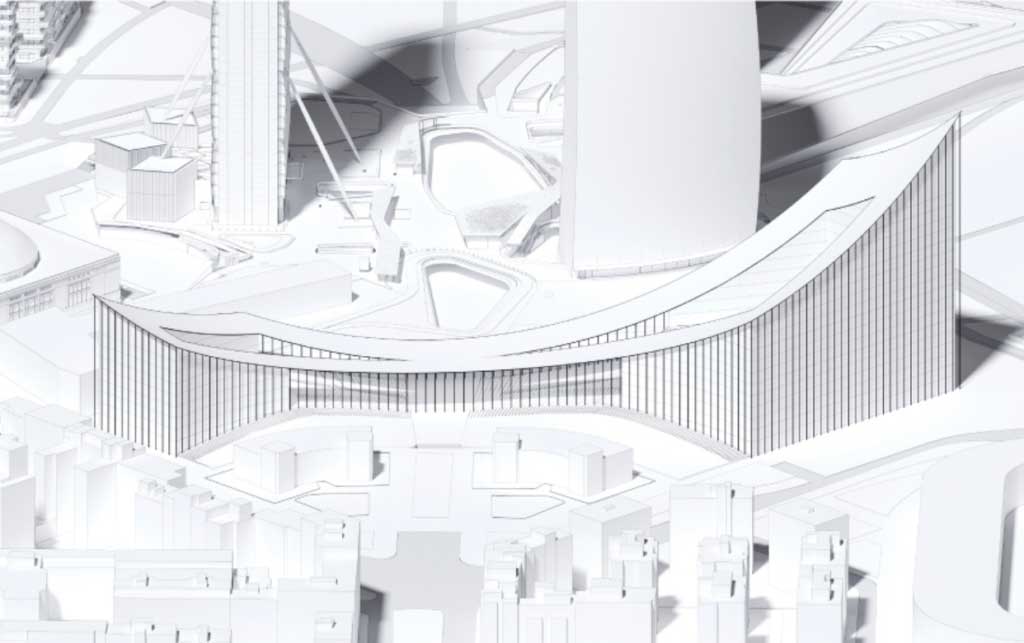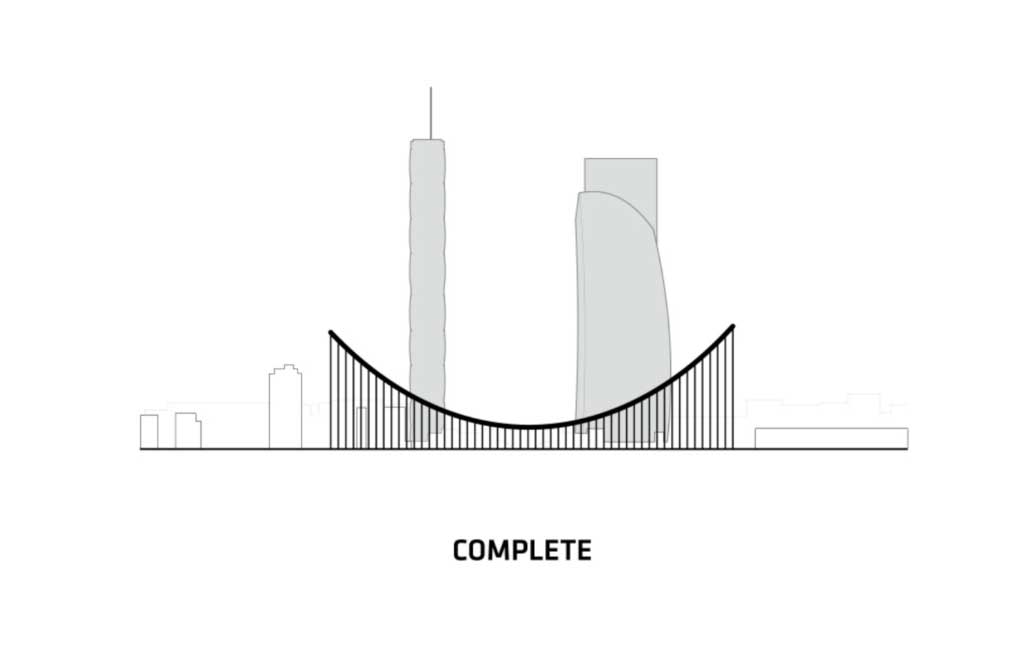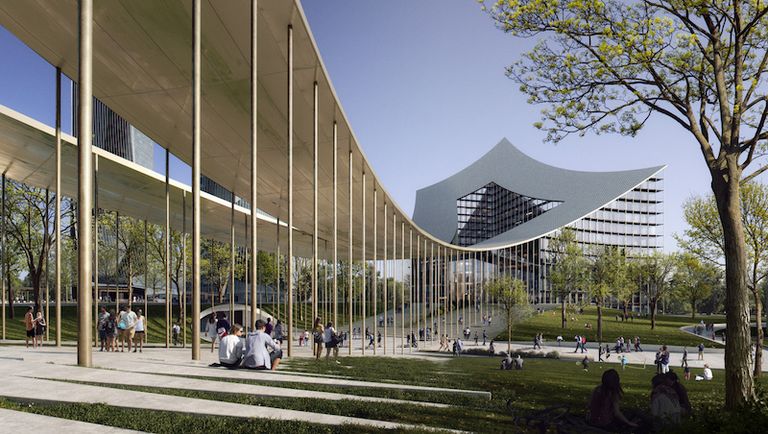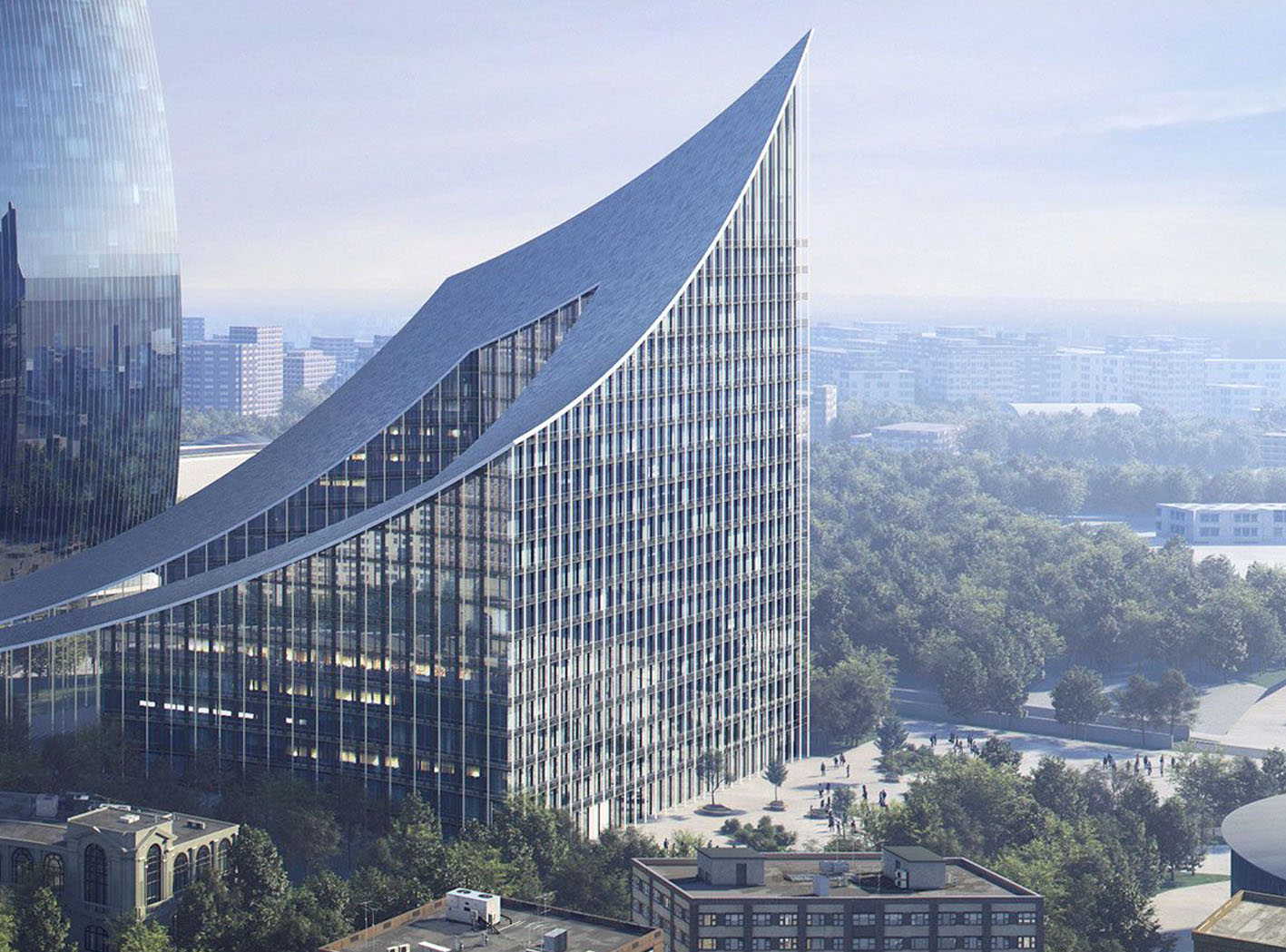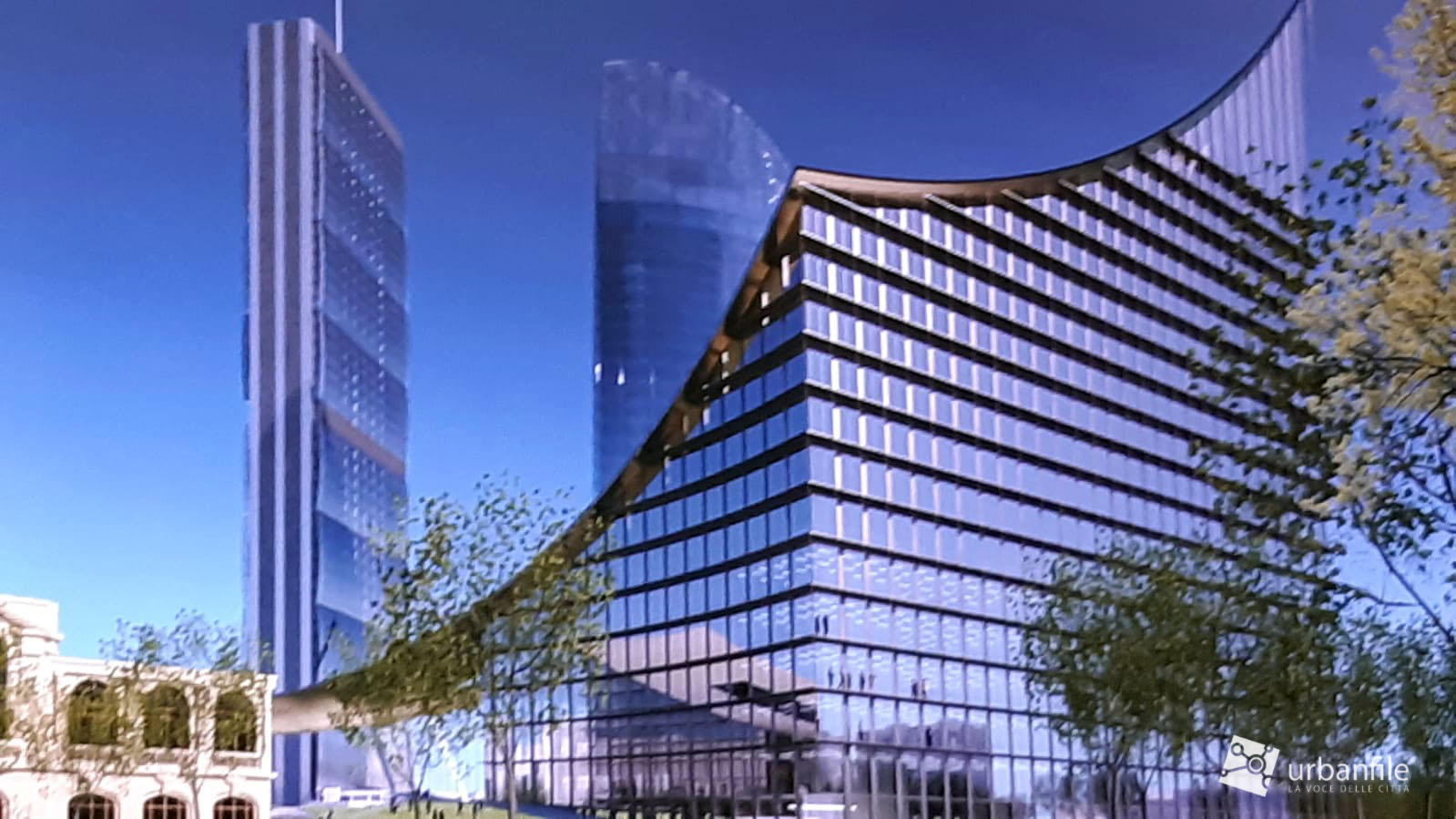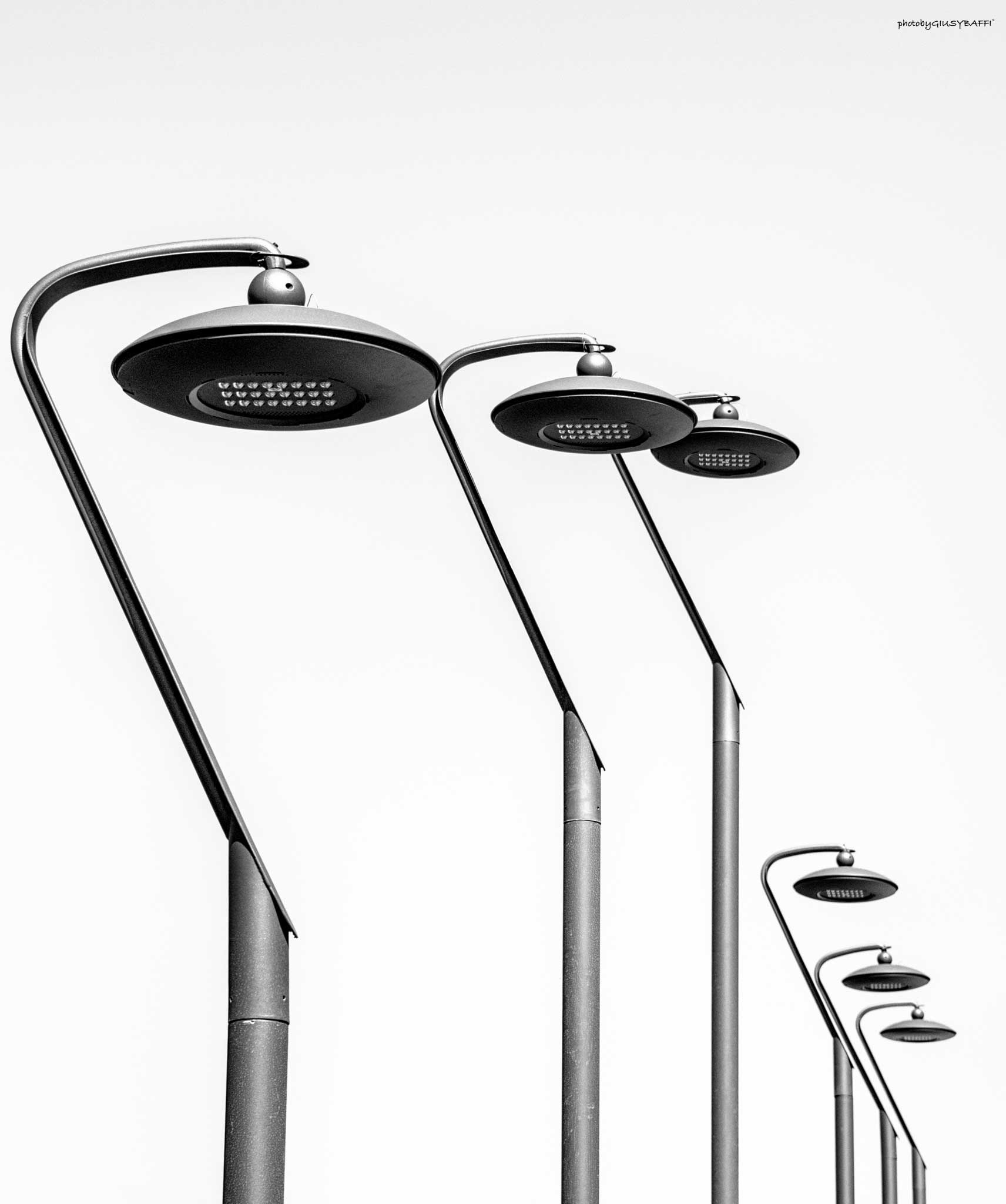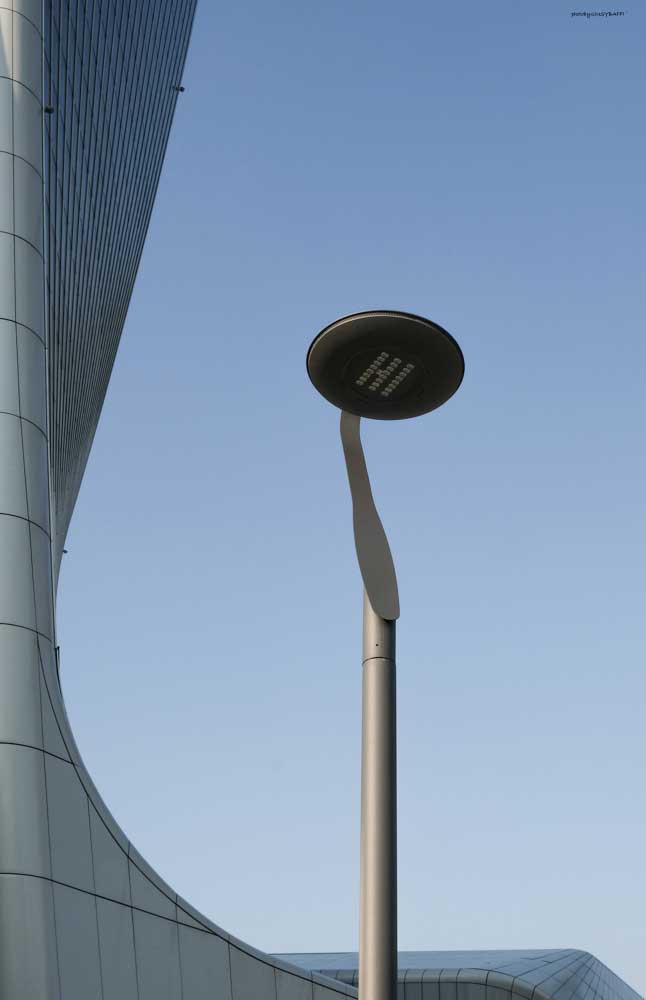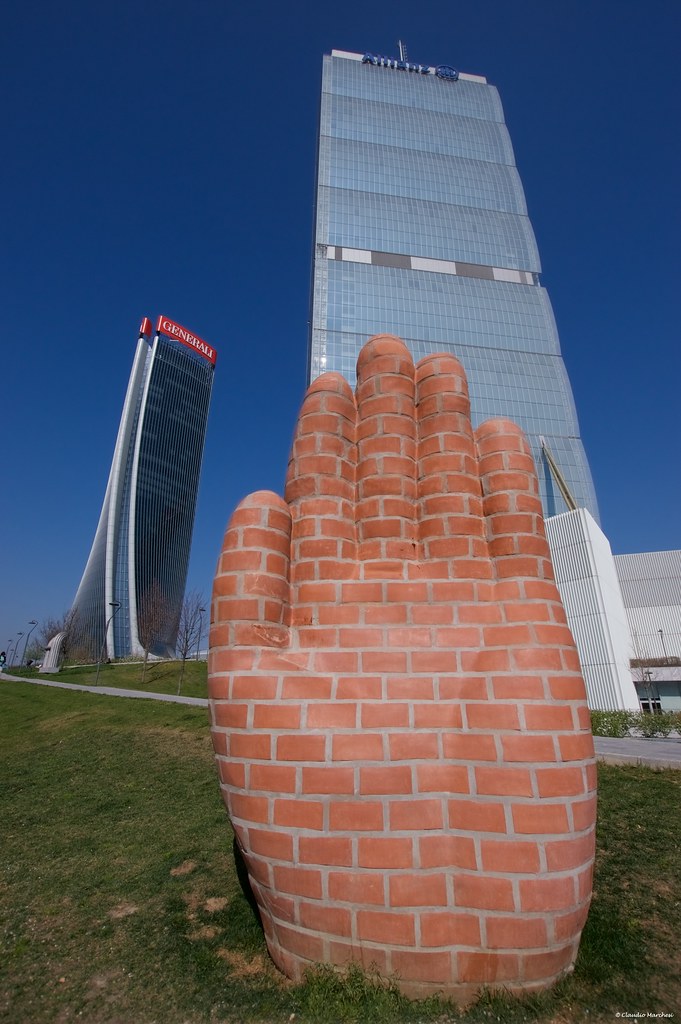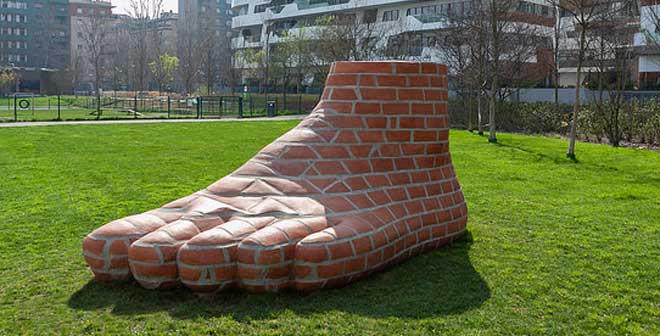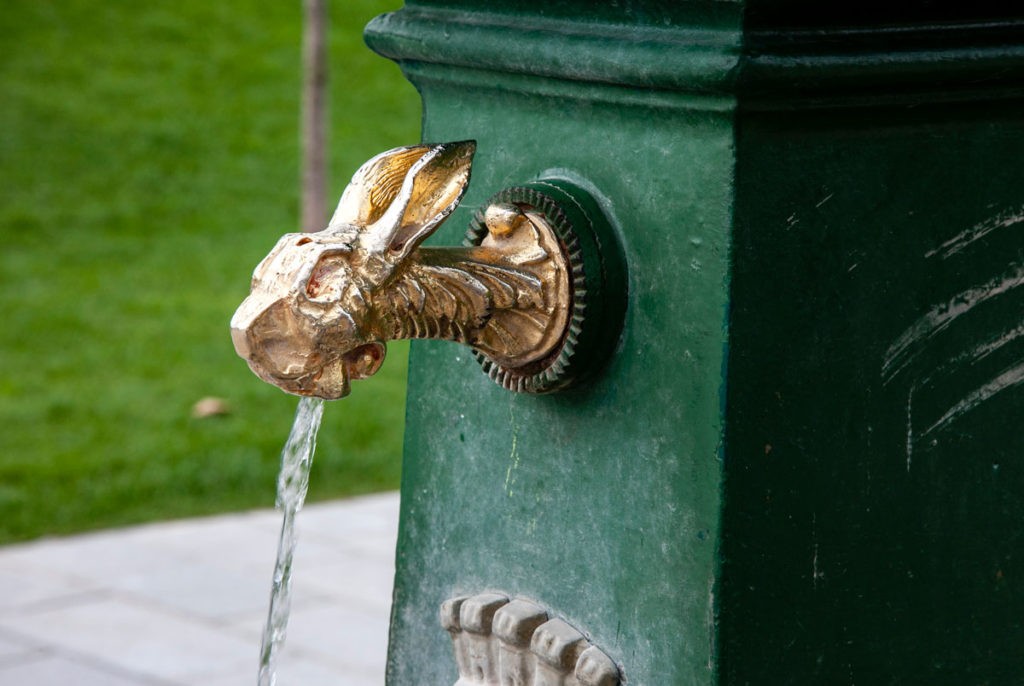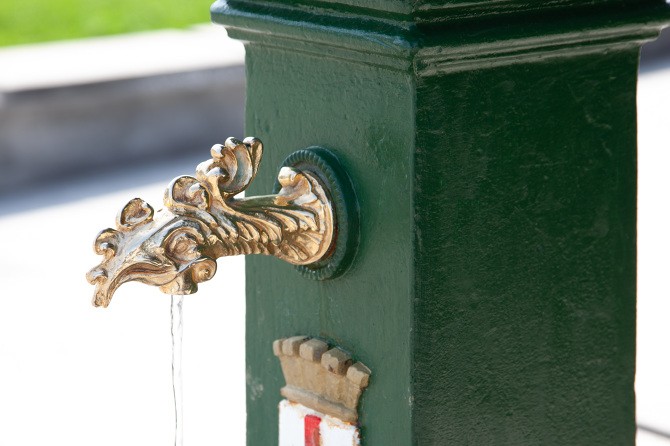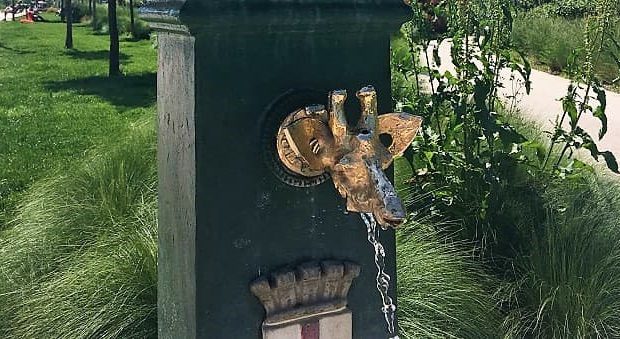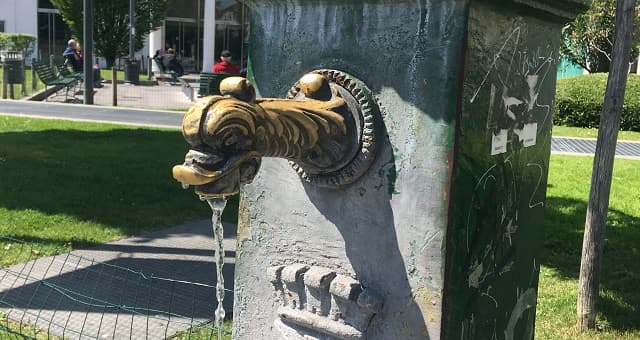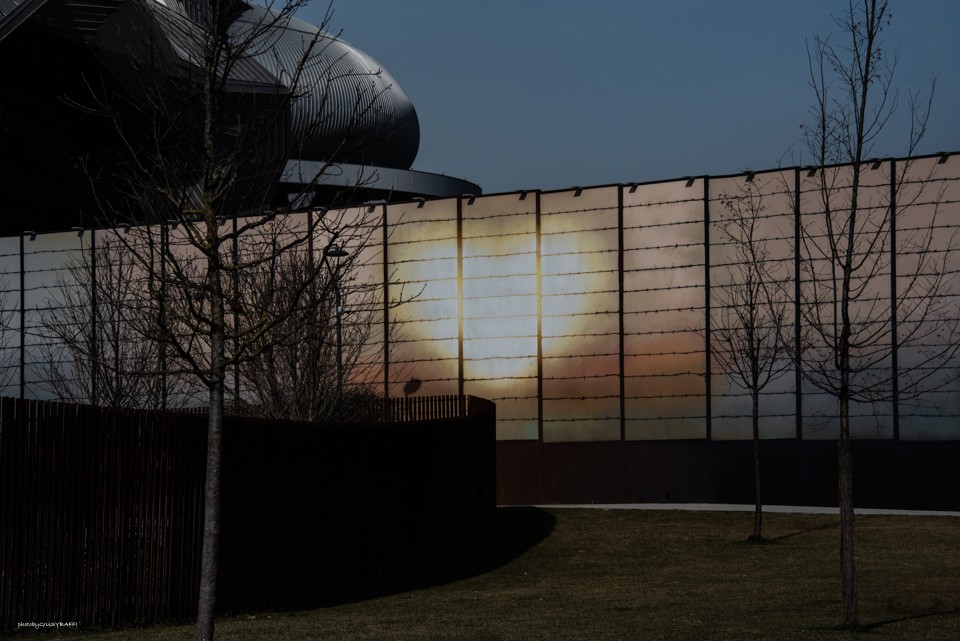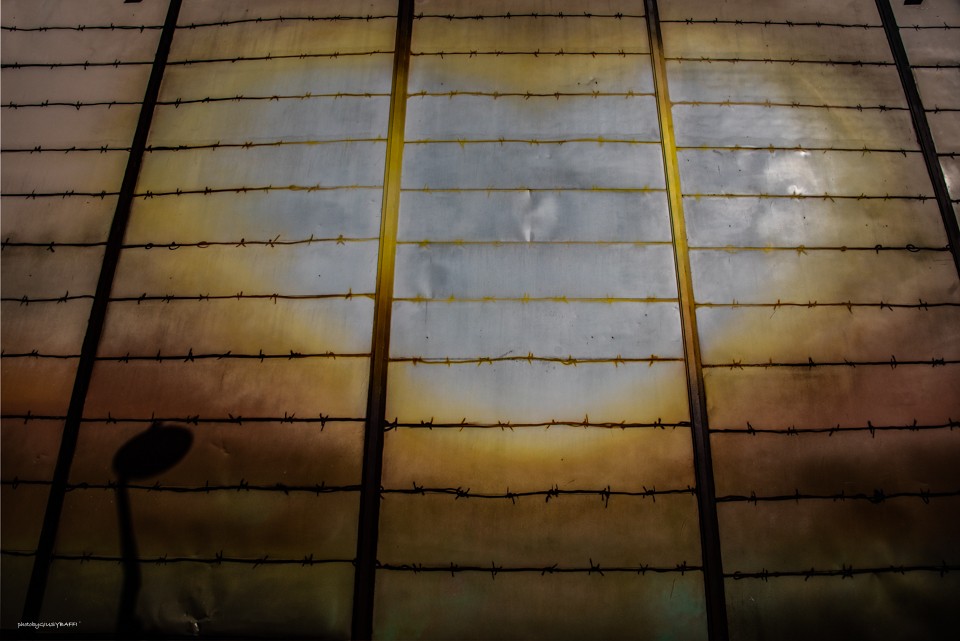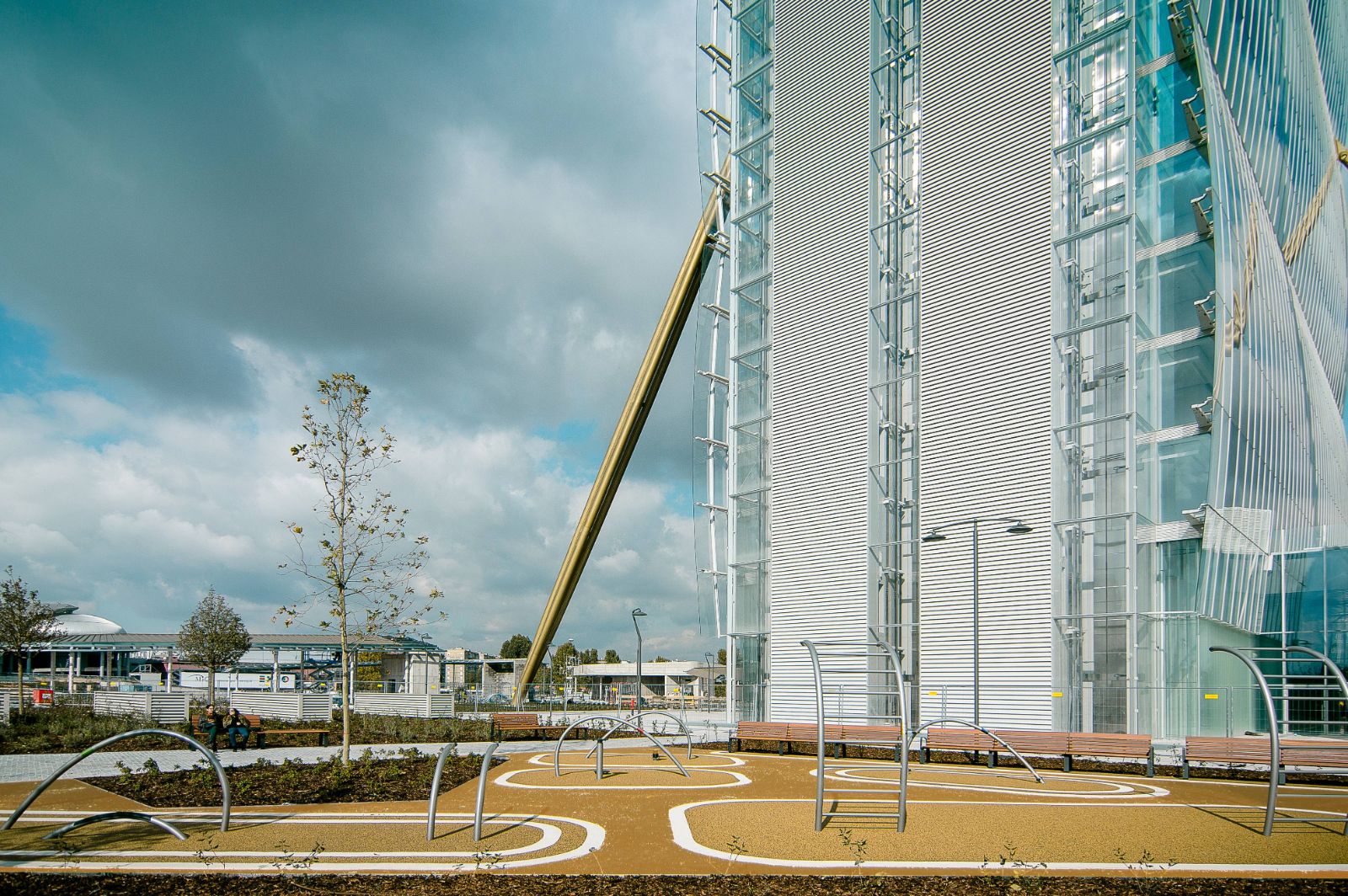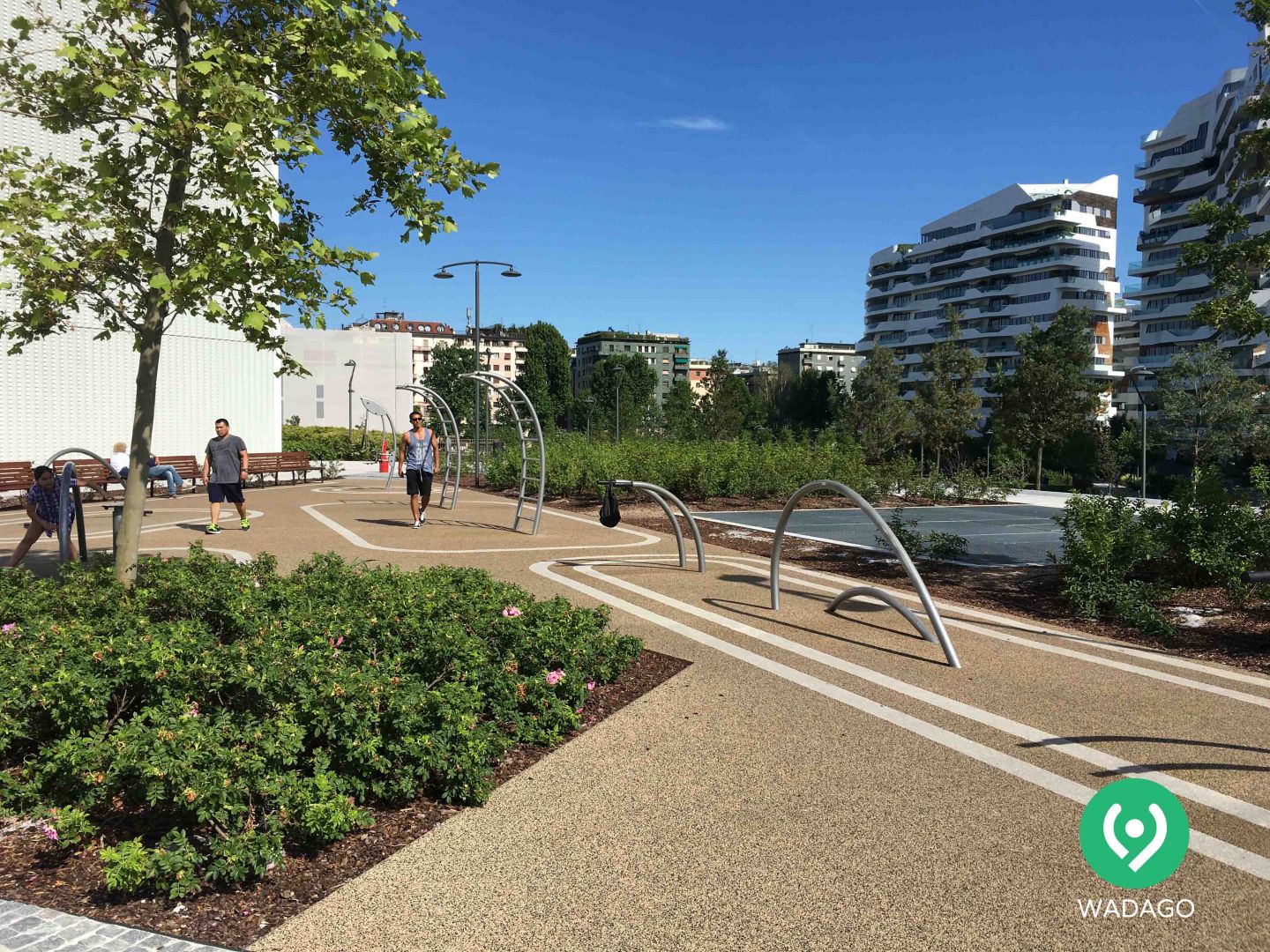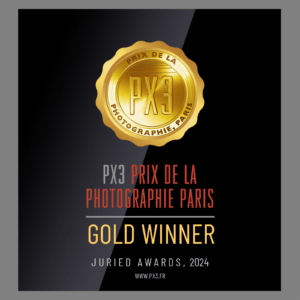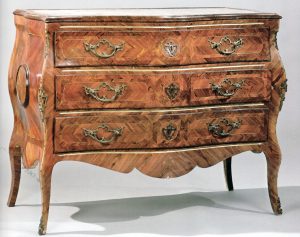MILANO CITYLIFE: UNA RIQUALIFICAZIONE IN CONTINUO DIVENIRE – MILANO CITYLIFE: A CONTINUOUSLY EVOLVING REDEVELOPMENT
LE ORIGINI
C’era una volta a Milano la Fiera Campionaria, nata nel 1920 e trasferita nel 1923 nell’antica Piazza d’Armi, un’area che, dopo la seconda guerra mondiale, era di oltre 27 ettari. Negli anni ’60 e ’70 la Fiera Campionaria diventò testimone del grande boom economico, trasformandosi nel punto d’incontro commerciale e internazionale tra l’Est e l’Ovest.
Successivamente l’area viene poco alla volta abbandonata.
Nel 2004 è varato il progetto Citylife e tra il 2007 e il 2008 terminano le demolizioni della vecchia Fiera Campionaria per realizzare, mediante il dimezzamento della cubatura preesistente, la più grande area pedonale di Milano, una delle maggiori in Europa, con la circolazione di auto e parcheggi esclusivamente ai piani interrati e la futura realizzazione del terzo parco milanese, con un’estensione totale di 336.000 mq.
Once upon a time in Milan, there was the Fiera Campionaria, born in 1920 and moved to the ancient Piazza d’Armi in 1923, an area that, after World War II, spanned over 27 hectares. In the ’60s and ’70s, the Fiera Campionaria became a witness to the great economic boom, transforming into the commercial and international meeting point between East and West.
Subsequently, the area was gradually abandoned.
In 2004, the Citylife project was launched, and between 2007 and 2008, the demolitions of the old Fiera Campionaria were completed to create, by halving the existing volume, the largest pedestrian area in Milan, one of the largest in Europe. The circulation of cars and parking is exclusively underground, with the future creation of Milan’s third park, covering a total area of 336,000 square meters.
Gli architetti incaricati della progettazione sono di fama internazionale, ognuno con delle peculiarità e caratteristiche a sé stanti: Arata Isozaki, Zaha Hadid e Daniel Libeskind, gli ultimi due, insieme a Frank Gehry, sono importanti esponenti della nuova corrente dell’architettura decostruttivista. (per approfondire l’architettura decostruttivista: https://www.giusybaffi.com/decostruttivismo-architettura-spazio-in-evoluzione/ )
Ogni architetto è stato incaricato di progettare sia un grattacielo che un centro residenziale.
A causa del terreno alluvionale tipico di Milano e di buona parte della Pianura Padana, è stata inizialmente scavata su tutta l’area una platea di fondazione omogenea e profonda in cemento, edificata sopra una fitta ed alta palificazione riempita di gettate di calcestruzzo. In questo modo la platea è in grado di assorbire sia eventuali cedimenti del terreno che spinte sismiche. Sulla stessa piattaforma insiste il tunnel della nuova metropolitana lilla.
The architects entrusted with the design are of international renown, each with their own unique characteristics: Arata Isozaki, Zaha Hadid, and Daniel Libeskind. The latter two, along with Frank Gehry, are significant representatives of the new wave of deconstructivist architecture. (To delve deeper into deconstructivist architecture: https://www.giusybaffi.com/decostruttivismo-architettura-spazio-in-evoluzione/)
Each architect has been tasked with designing both a skyscraper and a residential center.
Due to the alluvial soil typical of Milan and much of the Po Valley, initially, a homogeneous and deep foundation slab in concrete was excavated across the entire area. It was constructed above a dense and high piling filled with poured concrete. This way, the foundation slab is capable of absorbing both potential ground settlements and seismic forces. The new lilac metro tunnel also runs on the same platform.

IL NUOVO BUSINESS DISTRICT
PROGETTO ISOZAKI – MAFFEI – (TORRE ALLIANZ)
Arata Isozaki ha progettato, con Andrea Maffei, il primo grattacielo, meglio conosciuto come la torre Allianz, soprannominata “il dritto”.
“Nel nostro arcipelago di forme, abbiamo trovato interessantesviluppare l’idea di un grattacielo senza fine, una sorta di ENDLESS TOWER. Ormai troviamo grattacieli di qualsiasi forma e decorazione in tutte le parti del mondo. Da ciò ci sembrava più affascinante studiare un concetto da applicare al grattacielo, rispetto al solo studio di una forma bella esteticamente. Nell’aspirazione alla massima verticalità e alla tensione verso l’alto, risultava limitante scegliere una forma compiuta e conclusa ad una certa altezza ed abbiamo preferito applicare il concetto di un sistema modulare che si può ripetere all’infinito senza soluzione di continuità.” Andrea Maffei
Con i suoi 55 piani, 5 dei quali interrati ad uso parcheggio ed un’altezza di 209 metri, ha cifre di tutto rispetto: 14 ascensori di cui 6 panoramici, una facciata a doppia pelle in vetro di forma appena bombata verso l’esterno per una copertura di 26.000 mq. composta da 4.500 elementi in vetro triplo ricurvo, deformazione ottenuta dalla piegatura a freddo del vetro attraverso l’incollaggio ai montanti in alluminio con un lato ricurvo.
Quattro elementi diagonali metallici color oro, detti puntoni, di lunghezza variabile da 40 a 60 mt. connettono l’undicesimo livello della Torre con la base della struttura, questi tiranti d’irrigidimento hanno una funzione statica con dei veri e propri ammortizzatori sotto il piano del calpestio. La superficie in vetro è interrotta al 21° e all’ultimo piano da due strutture in ferro che fungono da anelli di irrigidimento di tutto il grattacielo e che servono anche da zone tecniche per gli impianti.
Il centro residenziale Isozaky è in fase di progettazione ma non si ha la certezza della sua realizzazione.
Per ulteriori informazioni su Arata Isozaki: https://www.giusybaffi.com/education-city-a-doha-quando-larchitettura-si-fonde-con-la-conoscenza/ e https://www.giusybaffi.com/lultimo-isozaki-larchitettura-organica/
PROGETTO ZAHA HADID – (TORRE GENERALI)
La torre Hadid, soprannominata “lo storto” e meglio conosciuta come Torre Generali, dà la sensazione di un grattacielo che si avvita nel cielo.
La geometria dell’edificio è rappresentata da una forma in torsione, con le dimensioni e l’orientamento dei piani variabili lungo l’asse verticale, secondo espressioni matematiche definite. La torsione è resa da una sequenza di pilastri inclinati, questo movimento è contrastato da un nucleo centrale perfettamente verticale in cemento armato dallo spessore che varia da 1 mt. alla base a 40 cm ai piani alti e che contiene tutti gli impianti tecnici, ascensori compresi.
Alta circa 170 mt. dal livello della piazza, ha 47 piani, di cui 3 piani interrati.
I terminali della torre sono in cemento armato per dare maggiore rigidità alla struttura.
La torre Hadid è collegata alla base da un volume successivo, il Podium, un elemento funzionalmente e strutturalmente indipendente. È dotato di una struttura a forma libera e composita in acciaio e calcestruzzo, totalmente integrata con l’architettura.
ZAHA HADID PROJECT – (GENERALI TOWER)
The Hadid Tower, nicknamed “lo storto” (the twisted) and better known as the Generali Tower, gives the impression of a skyscraper spiraling into the sky.
The geometry of the building is characterized by a twisting form, with the dimensions and orientation of the floors varying along the vertical axis, following defined mathematical expressions. The twist is created by a sequence of inclined pillars, and this movement is counteracted by a perfectly vertical central core in reinforced concrete, with a thickness ranging from 1 meter at the base to 40 centimeters at the upper floors. This core houses all the technical installations, including elevators.
Standing at approximately 170 meters above ground level, the tower has 47 floors, including 3 underground levels.
The tower terminals are made of reinforced concrete to provide greater rigidity to the structure.
The Hadid Tower is connected to the base by a subsequent volume, the Podium, a functionally and structurally independent element. It features a free-form and composite structure in steel and concrete, fully integrated with the architecture.
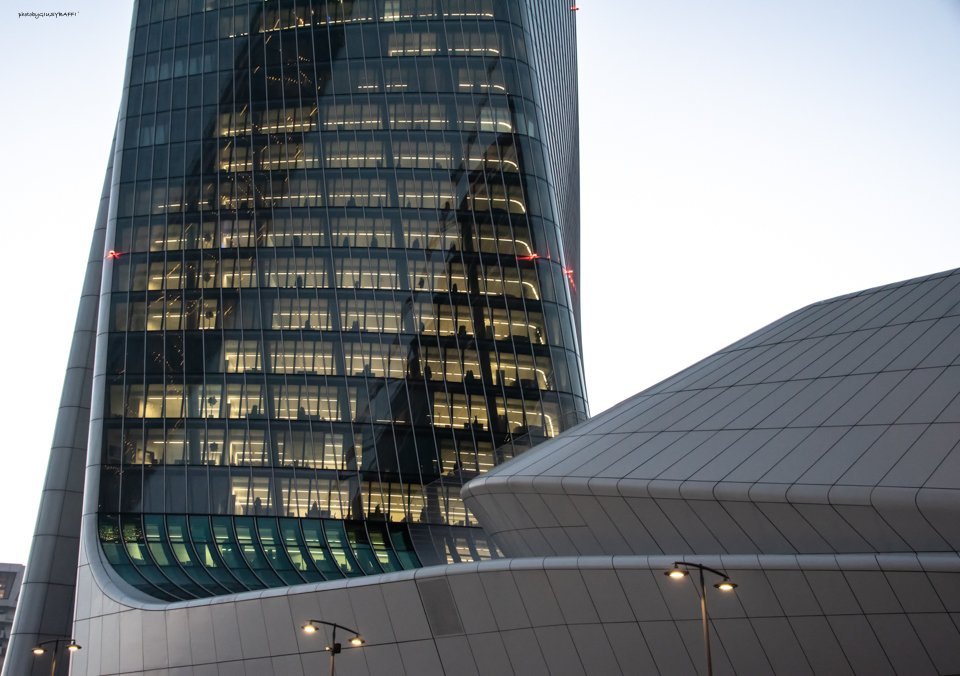
Inaugurato a fine novembre 2017, il Podium è diventato lo Shopping District, attualmente il centro commerciale urbano più grande d’Italia, che si sviluppa su una superficie di 32.000 metri quadrati, il cuore pulsante di tutto il nuovo quartiere.
L’interno, distribuito su 3 piani, è formato da 80 negozi, un supermercato, 20 ristoranti e 7 sale cinematografiche.
Tutta la parte interna è un continuo richiamo allo stile della grande Hadid: dal bosco immaginario costituito da colonne e soffitti in legno di bamboo, ai banchi di ristoro dalla forma di una barca, alle linee libere con punti visivi differenti tra i vari spazi, al soffitto in vetro e acciaio che lascia filtrare la luce.
Inaugurated at the end of November 2017, the Podium has transformed into the Shopping District, currently the largest urban shopping center in Italy, spanning an area of 32,000 square meters, the vibrant heart of the entire new neighborhood.
The interior, spread over 3 floors, features 80 shops, a supermarket, 20 restaurants, and 7 cinemas.
The entire interior is a continuous homage to the style of the great Hadid: from the imaginary forest composed of bamboo columns and ceilings to the food counters shaped like boats, to the free-flowing lines with different visual points in various spaces, to the glass and steel ceiling that allows light to filter through.
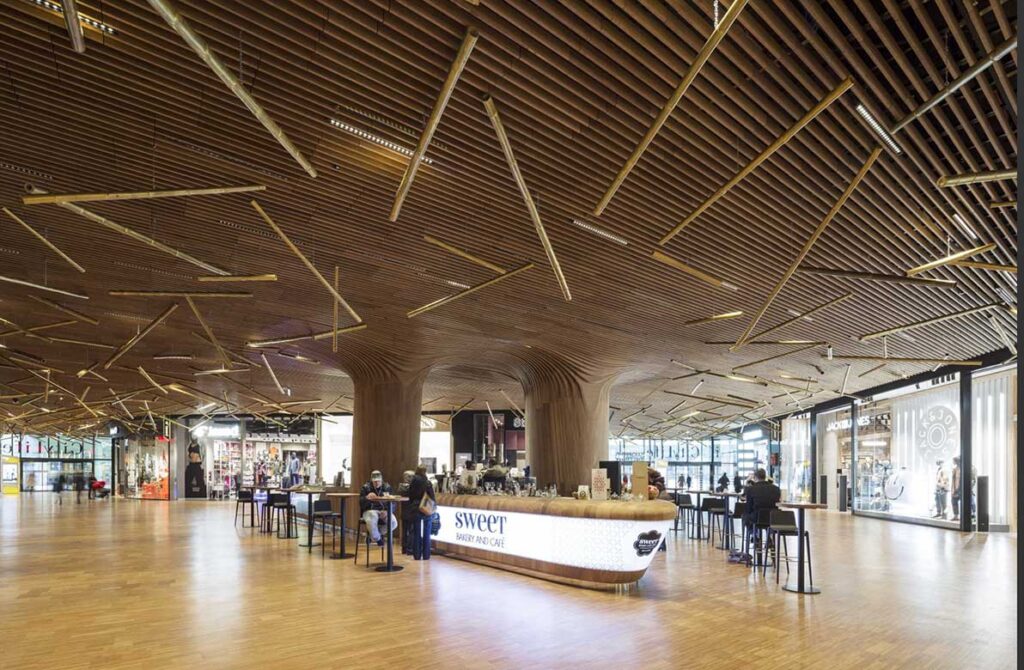
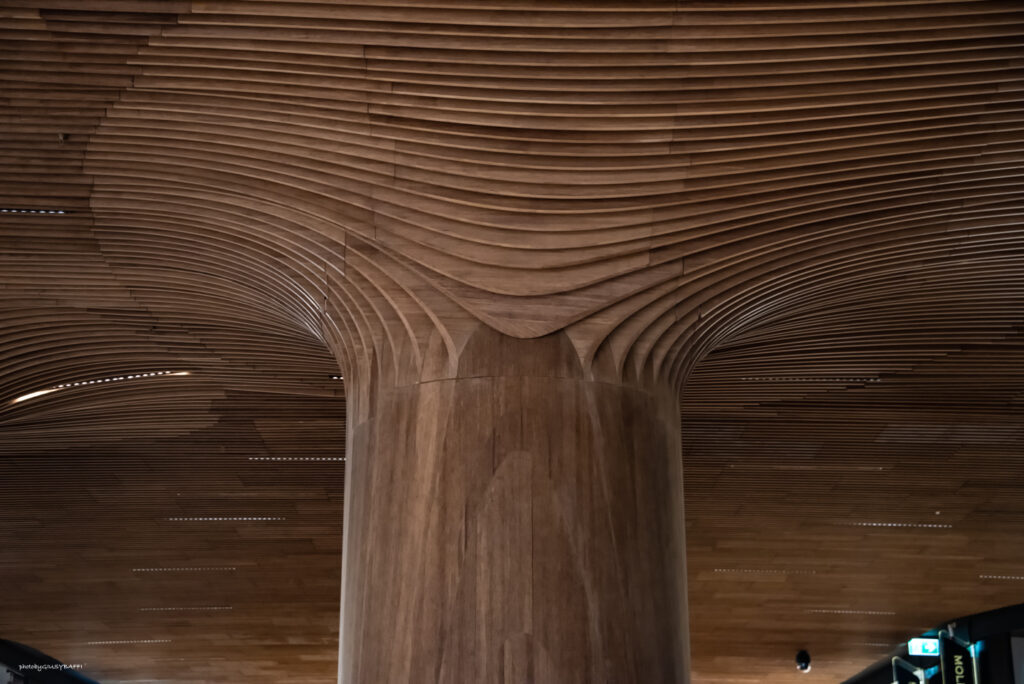
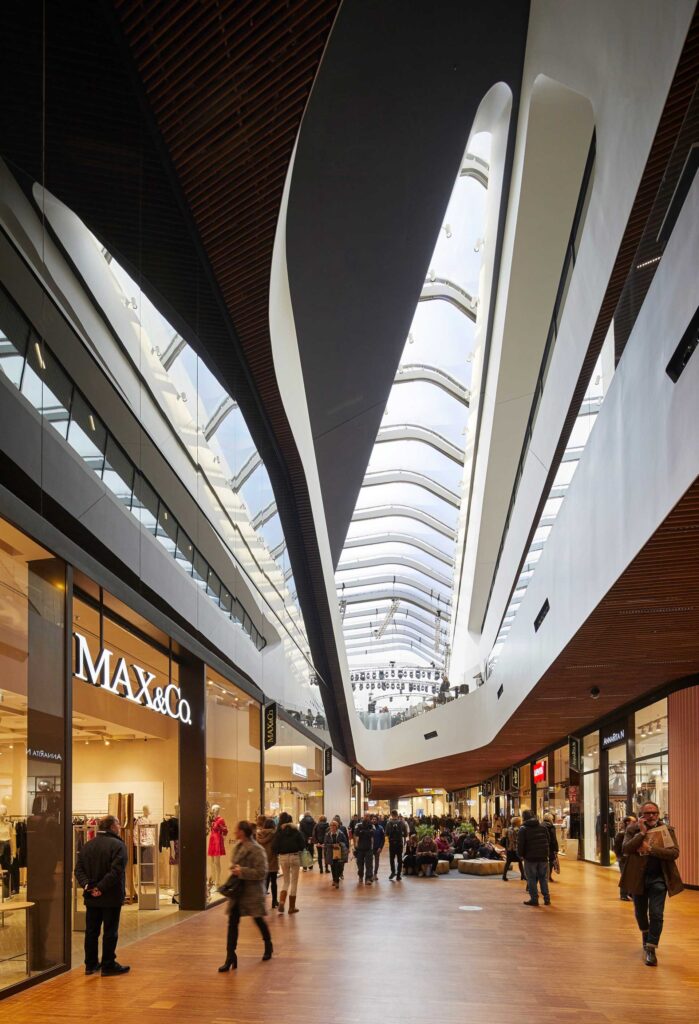
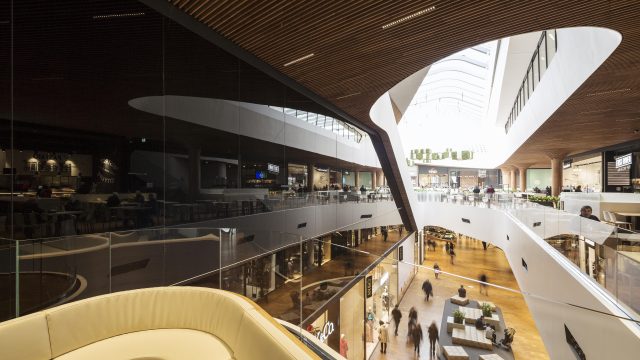
Il centro residenziale Hadid è concepito come un transatlantico di lusso, Il suo progetto privilegia un andamento sinuoso delle facciate. I rivestimenti sono in cemento, alluminio e doghe di pino canadese che dovrebbero prendere con il tempo una sfumatura grigiastra.
Sia i terrazzi che le finestre sono concepiti come elementi a nastro continuo lungo le facciate, come sulle navi.
Gli attici sono normalmente di due piani, gli interni riprendono le linee sinuose degli esterni, parecchi elementi d’arredo sono disegnati dalla stessa Hadid.
Per approfondire Zaha Hadid: https://www.giusybaffi.com/zaha-hadid-un-linguaggio-architettonico-di-fluidita-e-natura/
The Hadid Residential Center is conceived as a luxury transatlantic ship. Its design emphasizes a sinuous flow of facades. The coverings are made of concrete, aluminum, and Canadian pine slats that are expected to develop a grayish hue over time.
Both the terraces and windows are designed as continuous ribbon-like elements along the facades, reminiscent of ships.
The penthouses typically span two floors, and the interiors echo the sinuous lines of the exteriors. Several pieces of furniture are designed by Zaha Hadid herself.
For further exploration of Zaha Hadid’s work: Zaha Hadid: An Architectural Language of Fluidity and Nature
PROGETTO LIBESKIND – (TORRE PwC)
La Torre Libeskind, soprannominata “il curvo”, e meglio conosciuta come Torre PwC si trova al centro della composizione delle tre torri e con la sua forma ricurva raccorda idealmente le altre due.
Il progetto iniziale si presentava con la torre d’irrigidimento verticale che conteneva i servizi, le scale e gli ascensori, che fuoriusciva, quasi come una stampella, dalla struttura concepita con una forma molto più curva.
LIBESKIND PROJECT – (PwC TOWER)
The Libeskind Tower, nicknamed “the curved one,” and better known as the PwC Tower, is located at the center of the composition of the three towers, and its curved shape ideally connects the other two.
The initial design featured a vertical stiffening tower that housed services, stairs, and elevators, protruding like a crutch from the structure conceived with a much more curved form.
Il progetto è stato successivamente modificato inserendo la torre d’irrigidimento e dei servizi all’interno della struttura stessa, diminuendone la curvatura e modificando la copertura.
La sua struttura è in calcestruzzo armato fino al 29° piano, mentre gli ultimi piani, per un totale di 34 piani, hanno una struttura in acciaio che, concepiti come open-space, vanno a costituire il coronamento sommitale con un’altezza complessiva di 175 metri dalla piazza.
The project was subsequently modified by incorporating the service and stiffening tower within the structure itself, reducing its curvature and modifying the roof.
Its structure is reinforced concrete up to the 29th floor, while the last floors, totaling 34 floors, have a steel structure. Conceived as open spaces, they form the upper crown with a total height of 175 meters from the square.
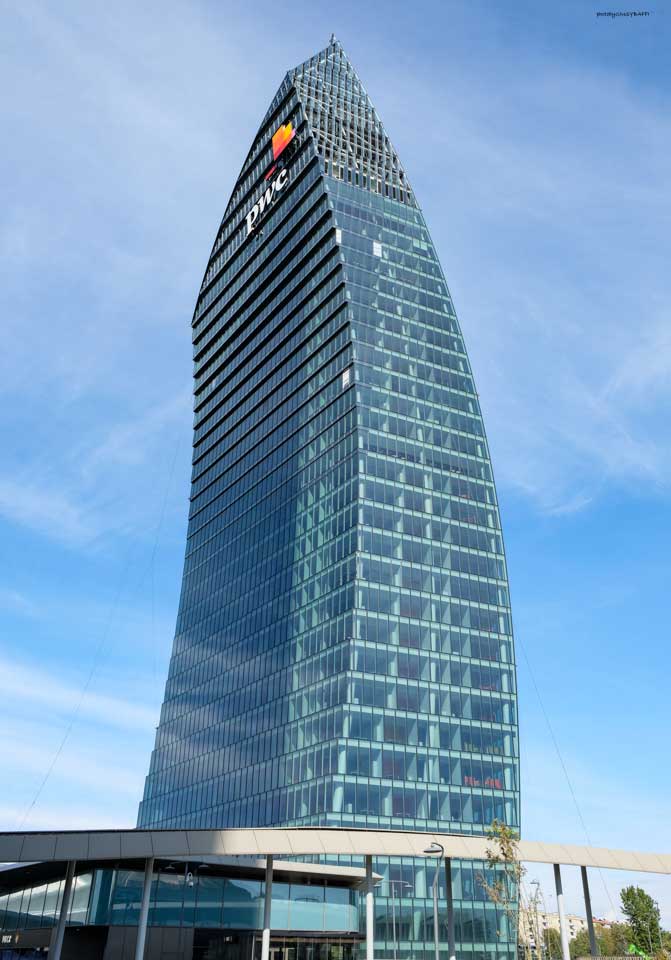
Il coronamento sommitale o corona, è caratterizzato da un volume interamente vetrato alto 40 metri al cui interno trovano posto gli impianti di manutenzione, climatizzazione e riciclo dell’acqua piovana. La forma rimanda alla sezione di una cupola rinascimentale, forma alla quale lo stesso Libeskind afferma di essersi ispirato.
E’ stato inaugurato nel mese di ottobre 2020.
The upper crown, or simply the crown, features a fully glazed volume standing at 40 meters in height. Within this space, maintenance facilities, air conditioning systems, and rainwater recycling systems are housed. The shape draws inspiration from the section of a Renaissance dome, as acknowledged by Libeskind himself.
The inauguration took place in October 2020.
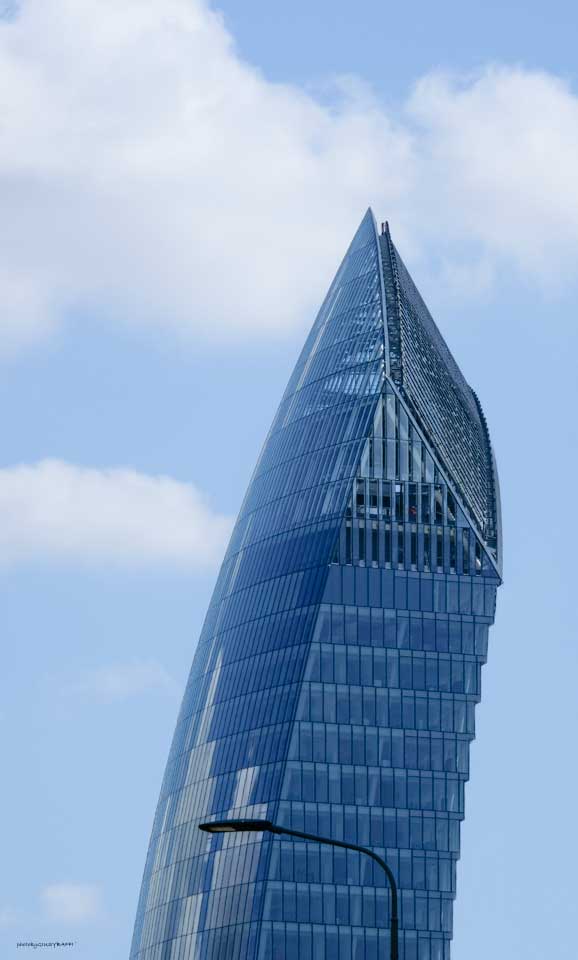
Il centro residenziale Libeskind è caratterizzato da edifici dalle geometrie asimmetriche tipiche del suo stile. Grandi schermi brise-soleil in legno sono visibili sulle facciate. Gli appartamenti sono caratterizzati da una grande luminosità garantita dalle vaste vetrate che prolungano gli ambienti verso gli ampi terrazzi coperti; gli attici, spesso a più piani interni, hanno gli arredi progettati da Cassina.
Sempre di Libeskind sono attualmente in costruzione le nuove “residenze basse”, si tratta di tre palazzine di cui due da cinque piani e una da nove piani, tutte con piscina. La consegna è prevista per il 2023.
Per approfondire la figura di questo architetto: https://www.giusybaffi.com/daniel-libeskind-archistar-del-nostro-tempo/
The Libeskind residential center is characterized by buildings with asymmetric geometries typical of his style. Large wooden brise-soleil screens are visible on the facades. The apartments feature ample brightness ensured by expansive windows that extend the living spaces towards the spacious covered terraces. The penthouses, often spanning multiple internal floors, boast furnishings designed by Cassina.
Currently, new “low-rise residences” by Libeskind are under construction. These consist of three buildings, two of which are five stories high, and one is nine stories high, all equipped with a pool. The completion is expected in 2023.
For a more in-depth exploration of this architect, visit: Daniel Libeskind: Archistar of Our Time
IL PADIGLIONE 3 – Il palazzo delle Scintille
Il primo edificio realizzato per la Fiera Campionaria nel 1923 su progetto dell’architetto Paolo Vietti Violi, l’unica palazzina non demolita e oggetto di restauro conservativo è Il Palazzo delle Scintille, ex palazzetto dello sport e velodromo. L’enorme cupola in ferro e vetro tipica delle costruzioni degli anni ’20 del secolo scorso, è stata completamente restaurata sostituendo il vetro con materiale high tech. La costruzione è stata comperata all’asta da Generali Assicurazioni nel mese di dicembre 2019, l’obiettivo potrebbe essere quello di ospitare eventi espositivi.
PAVILION 3 – The Palace of Sparks
The first building constructed for the Trade Fair in 1923, designed by architect Paolo Vietti Violi, is the Palace of Sparks. It is the only structure that has not been demolished and is undergoing a conservative restoration. Formerly a sports hall and velodrome, the massive dome made of iron and glass, characteristic of 1920s constructions, has been completely restored with the replacement of glass using high-tech materials. The building was purchased at auction by Generali Assicurazioni in December 2019, and the objective might be to host exhibition events.

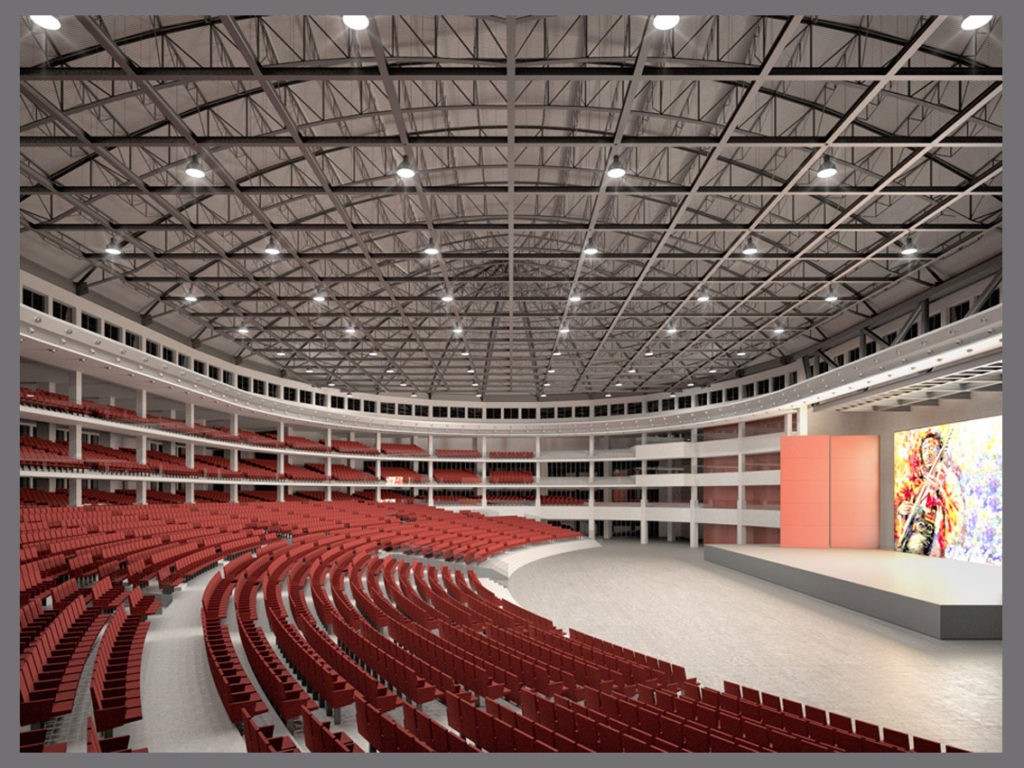
IL PORTICO – THE GATE, IL NUOVO “GRATTACIELO” ORIZZONTALE
«Abbiamo deciso di non competere in altezza con le tre torri, creandone una quarta, ma di completarle creando uno spazio pubblico, non timido ma con carattere, in dialogo con le torri stesse.” . Bjarke Ingels (BIG)
Un altro grattacielo, orizzontale a questo punto, è stato progettato dal gruppo BIG, ovvero dallo studio dell’architetto danese Bjarke Ingels. Si tratta de Il Portico- The Gate, un progetto di 53.500 metri quadrati costituito da due strutture individuali, due volumi predominanti con altezze differenti e collegati tra loro da una passerella a forma di portico, arcuata e pensile lunga 140 metri, tutta la copertura sarà rivestita da pannelli solari.
The Portico – The Gate, the New Horizontal ‘Skyscraper‘
“We have decided not to compete in height with the three towers, creating a fourth one, but to complement them by creating a public space, not timid but with character, in dialogue with the towers themselves.” – Bjarke Ingels (BIG)
Another skyscraper, this time horizontal, has been designed by the BIG group, led by the Danish architect Bjarke Ingels. It is called The Portico – The Gate, a project spanning 53,500 square meters, consisting of two individual structures with different heights, connected by a 140-meter-long, arched, and suspended walkway shaped like a portico. The entire roof will be covered with solar panels.”
Gli edifici, concepiti in vetro per maggiore leggerezza e luminosità, avranno zone polifunzionali, openspace, terrazzi ad uso sia pubblico che privato, la stessa copertura di collegamento sarà uno spazio verde e pedonabile ad uso pubblico.
Una cornice innovativa che concluderà perfettamente lo spazio di Citylife.
I lavori dovrebbero iniziare nel 2021 e terminare nel 2023-2024.
The buildings, designed in glass for greater lightness and brightness, will have multifunctional areas, open spaces, terraces for both public and private use. The connecting roof itself will be a green and walkable space for public use.
An innovative framework that will seamlessly conclude the Citylife space.
The construction work is expected to begin in 2021 and conclude by 2023-2024.
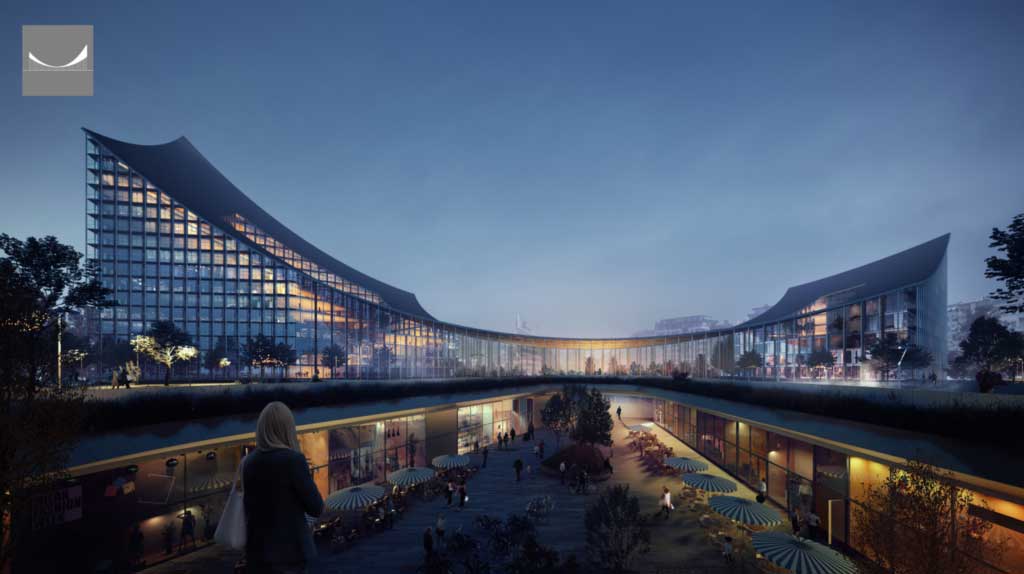
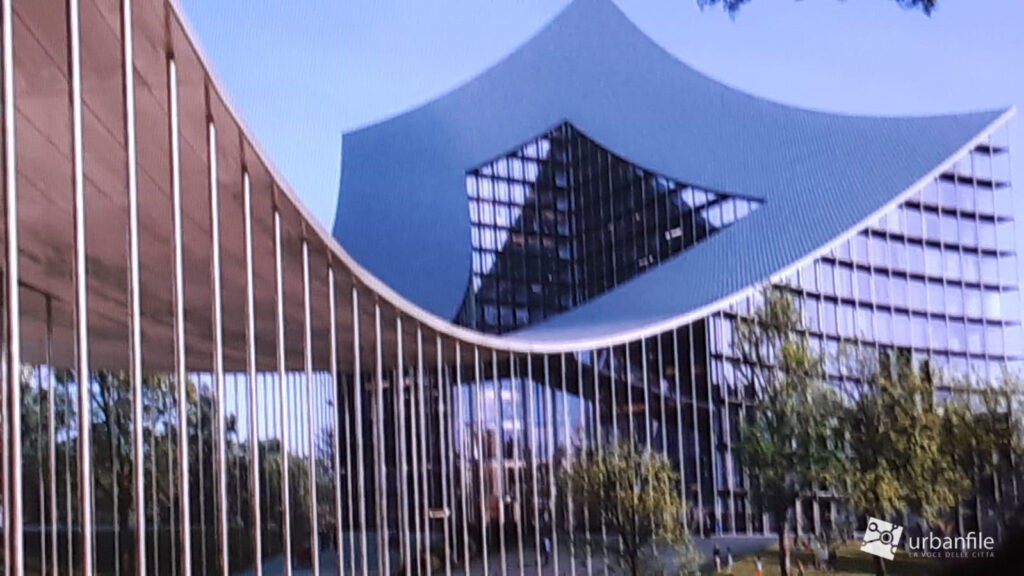
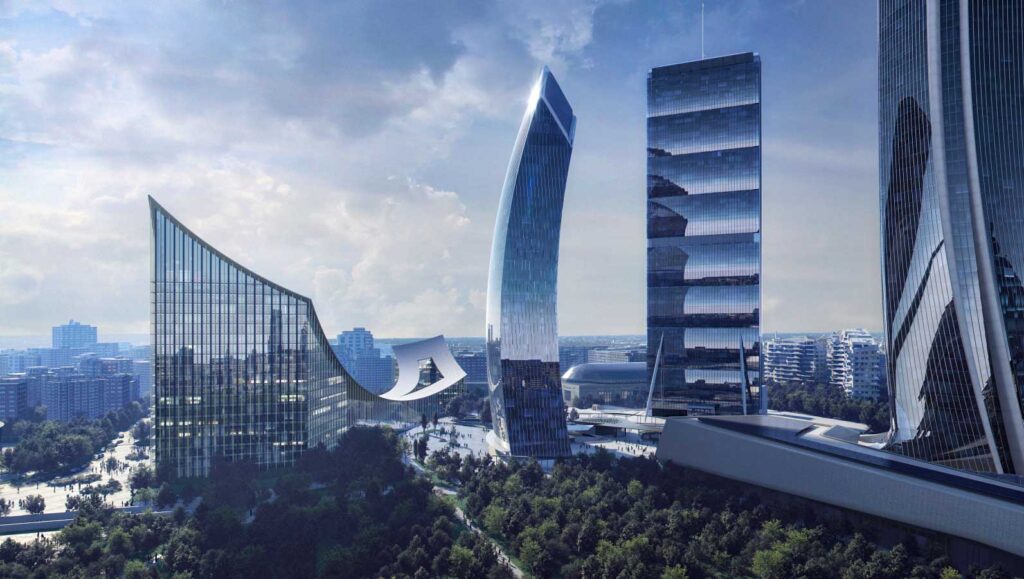
L’ARREDO URBANO: LAMPIONI E SEGNALETICHE
Nel quartiere Citylife ogni piccolo dettaglio è stato studiato con cura, gli 85 lampioni posizionati sia nel parco che nelle residenze e nelle zone pubbliche favoriscono una diffusa illuminazione di tutta la zona aumentando la percezione di sicurezza. Il progetto è stato affidato allo Studio di lighting design Ferrara Palladino di Milano, con i lampioni a led serie Urban 03® di Gewiss®.
URBAN FURNITURE: LAMPOSTS AND SIGNAGE
In the Citylife neighborhood, every small detail has been carefully studied. The 85 lampposts positioned both in the park and in residential and public areas contribute to widespread illumination of the entire area, enhancing the perception of safety. The project has been entrusted to the lighting design studio Ferrara Palladino in Milan, with LED lampposts from the Urban 03® series by Gewiss®.
Il design della segnaletica urbana che si trova all’interno del quartiere è stata affidata a Daniel Libeskind.
The design of the urban signage within the neighborhood has been entrusted to Daniel Libeskind.
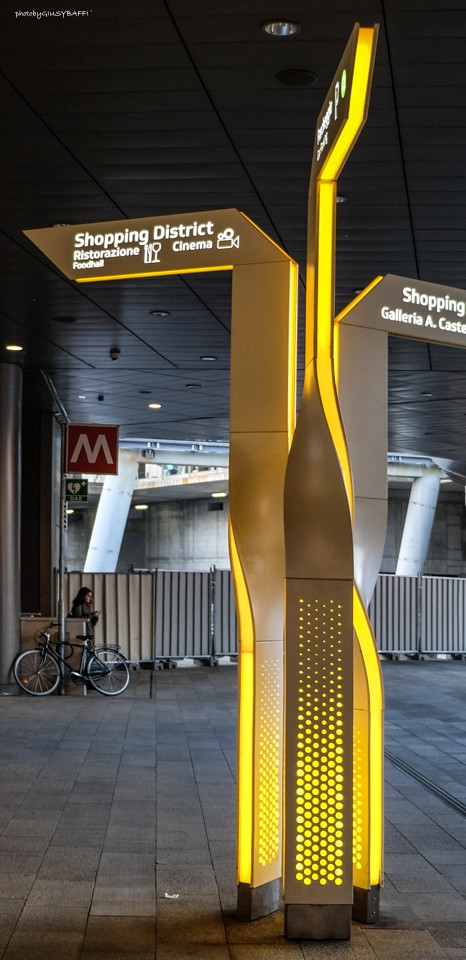
IL PARCO ARTLINE
Il parco che la circonda, una volta terminato, avrà una superficie di 170.000 metri quadrati; è stato progettato dallo studio di Gustafson Porter, architetto di paesaggio, in collaborazione con !Melk di New York e One Works di Milano, Ove Arup International di Londra ed Arup Italia.
Il suo nome è ArtLine perché non si tratta di un semplice parco, bensì ospita al suo interno opere e installazioni di arte contemporanea, il numero delle opere è in continuo divenire.
Di Judith Hopf ci sono le due sculture in mattoni rossi Hand and Foot for Milan, una grande mano e un grande piede in dialogo tra loro, la scelta del laterizio è stata fatta in contrapposizione alle costruzioni in cemento e acciaio che le circondano.
THE ARTLINE PARK
Once completed, the park surrounding it will have an area of 170,000 square meters. It has been designed by the landscape architecture studio Gustafson Porter, in collaboration with !Melk from New York and One Works from Milan, as well as Ove Arup International from London and Arup Italia.
Named ArtLine, it is not just an ordinary park; it hosts contemporary art installations and works within its space, with the number of pieces continuously evolving.
Among these works are the two sculptures in red bricks by Judith Hopf, titled “Hand and Foot for Milan” – a large hand and a large foot engaged in a dialogue with each other, the choice of brick was made in contrast to the buildings in concrete and steel that surround them.
Di Riccardo Benassi c’è una struttura in alluminio con un display a led bianchi, il Daily Desiderio: ogni giorno l’artista trasmette da remoto un messaggio diverso.
By Riccardo Benassi, there is a structure in aluminum with a display of white LED lights called “Daily Desiderio.” Every day, the artist remotely transmits a different message through this installation.
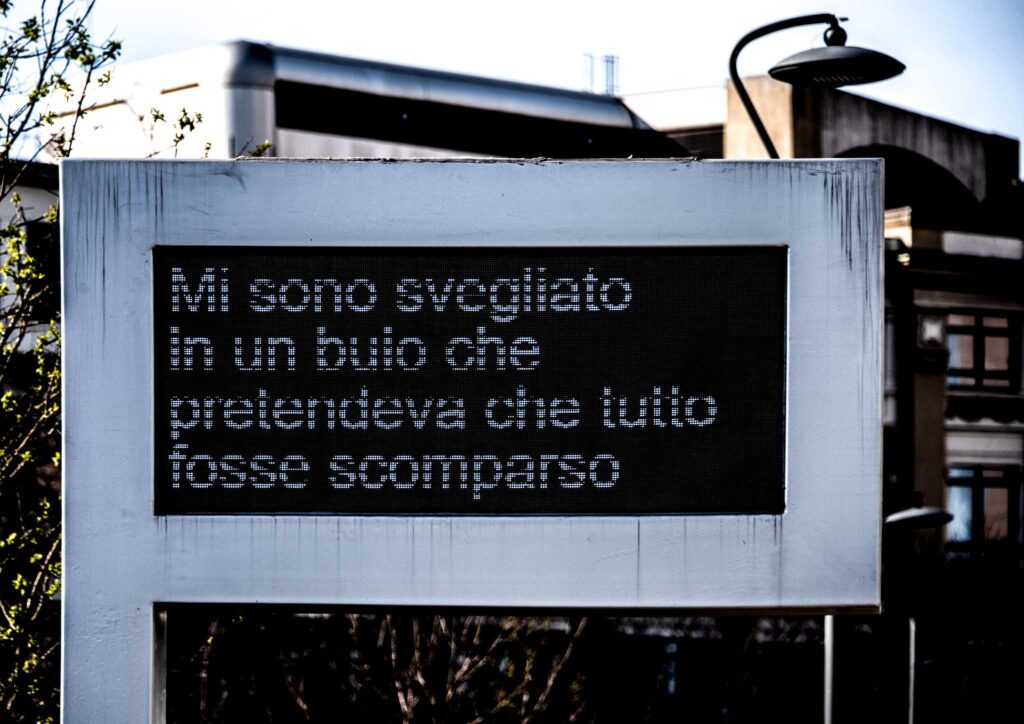
Coloris è un’installazione ovale di pali colorati, altri tra i 6 e i 12 metri la cui sommità termina con un uovo, che porta la firma di Pascale Marthine Tayou.
Coloris is an oval installation of colored poles, some ranging from 6 to 12 meters, each topped with an egg. This artwork has the signature of Pascale Marthine Tayou.
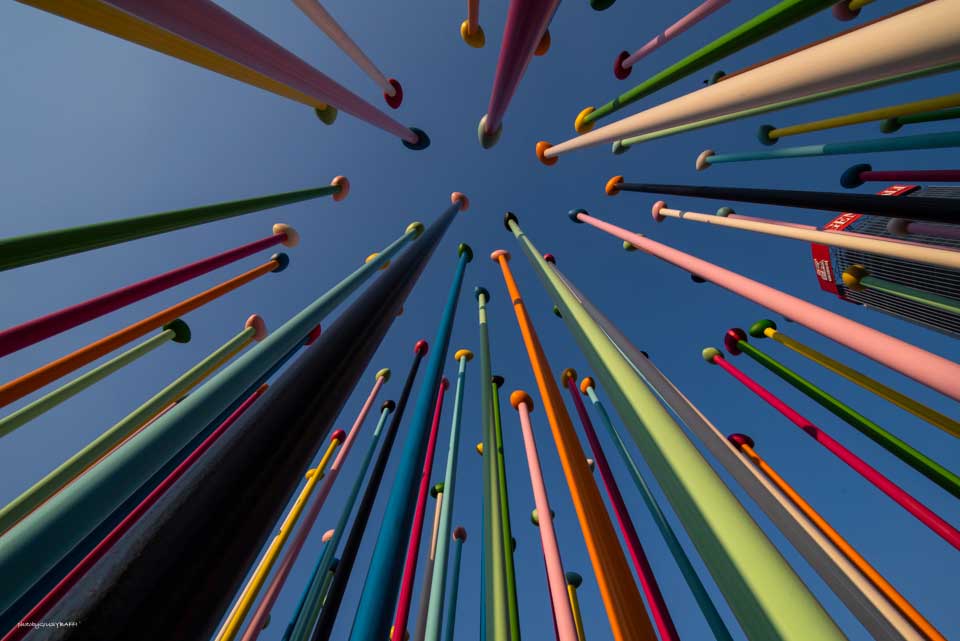
Le famose vedovelle, ovvero le classiche fontanelle verdi milanesi, assumono un altro significato grazie alla sostituzione delle bocchette originarie in ottone con varie piccole sculture in bronzo, che cambiano di volta in volta, opera della fantasia dell’artista Serena Vestrucci.
The famous “vedovelle,” which are the classic green Milanese drinking fountains, take on a different meaning through the replacement of their original brass spouts with various small bronze sculptures. These sculptures, changing from time to time, are the work of the artist Serena Vestrucci’s imagination.
Due sculture in fusione di alluminio dalla forma di colonne umanizzate che si tengono a braccetto dal titolo Filèmone e Bauci sono opera di due giovani artisti Ornaghi & Prestinari. Basandosi sul mito tratto dalle Metamorfosi di Ovidio, Filèmone e Bauci rappresentano il tema dell’accoglienza, virtù che Milano è sempre riuscita ad offrire.
Two aluminum cast sculptures in the form of humanized columns, titled “Filemone e Bauci,” are the work of two young artists, Ornaghi & Prestinari. Drawing inspiration from the myth in Ovid’s “Metamorphoses,” Philemon and Baucis represent the theme of hospitality, a virtue that Milan has always managed to offer.
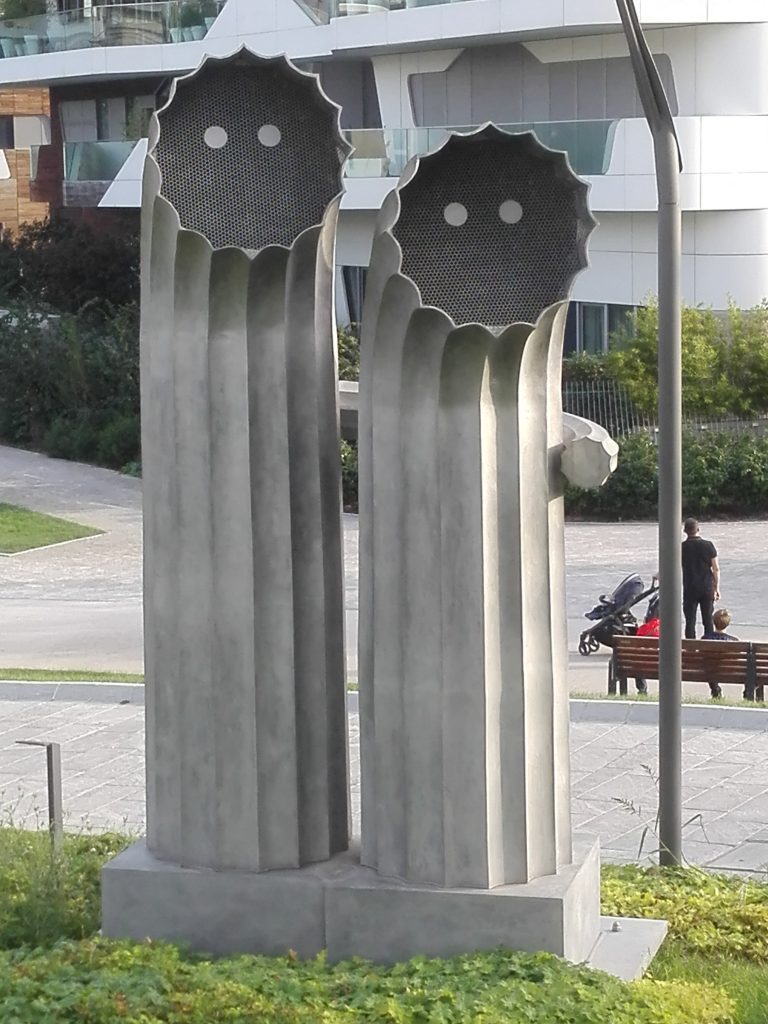
Due massi erratici in grandi dimensioni, affiancati l’uno all’altro dal titolo Il Beso sono opera dell’artista cubano Wilfredo Prieto e anch’essi fanno da contrapposizione alla modernità metropilitana.
Two large erratic boulders placed side by side, titled “Il Beso,” are the work of the Cuban artist Wilfredo Prieto. These sculptures also serve as a counterpoint to metropolitan modernity.
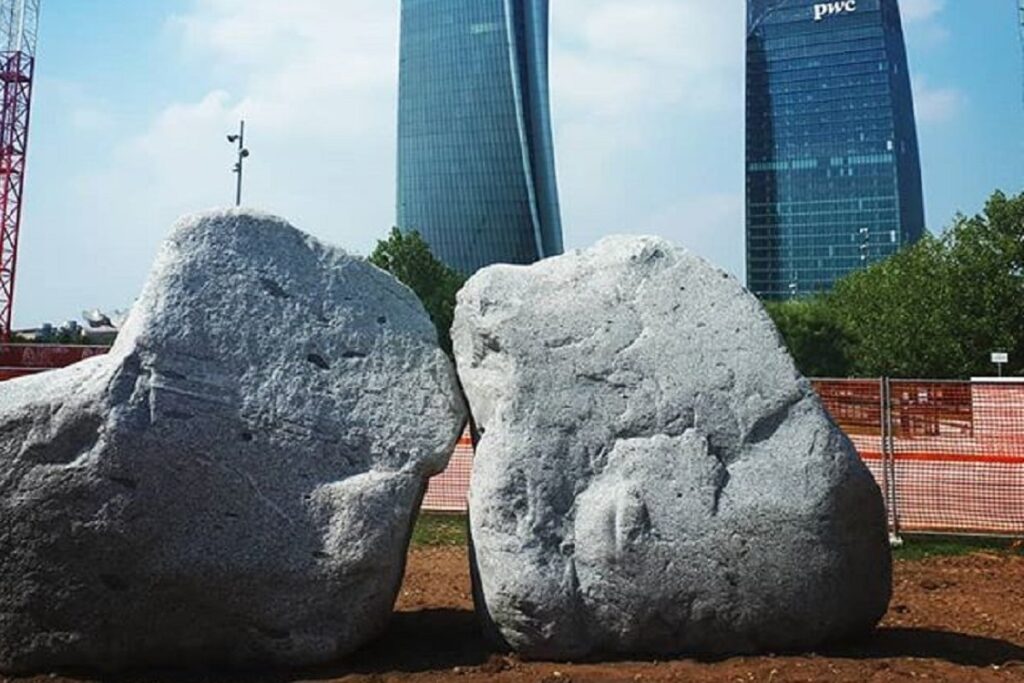
Sul pavimento di piazza Burri si possono ammirare i Cieli di Belloveso dell’artista Matteo Rubbi, una realizzazione di 100 stelle in pietra di colore e dimensioni differenti, che rappresentano la volta stellata di Milano nella primavera del 600 avanti Cristo, anno in cui dovrebbe essere stata fondata Milano. La storia della fondazione è inoltre corredata da dati astronomici che, incisi nella pietra, descrivono le coordinate temporali e storiche dell’evento astronomico.
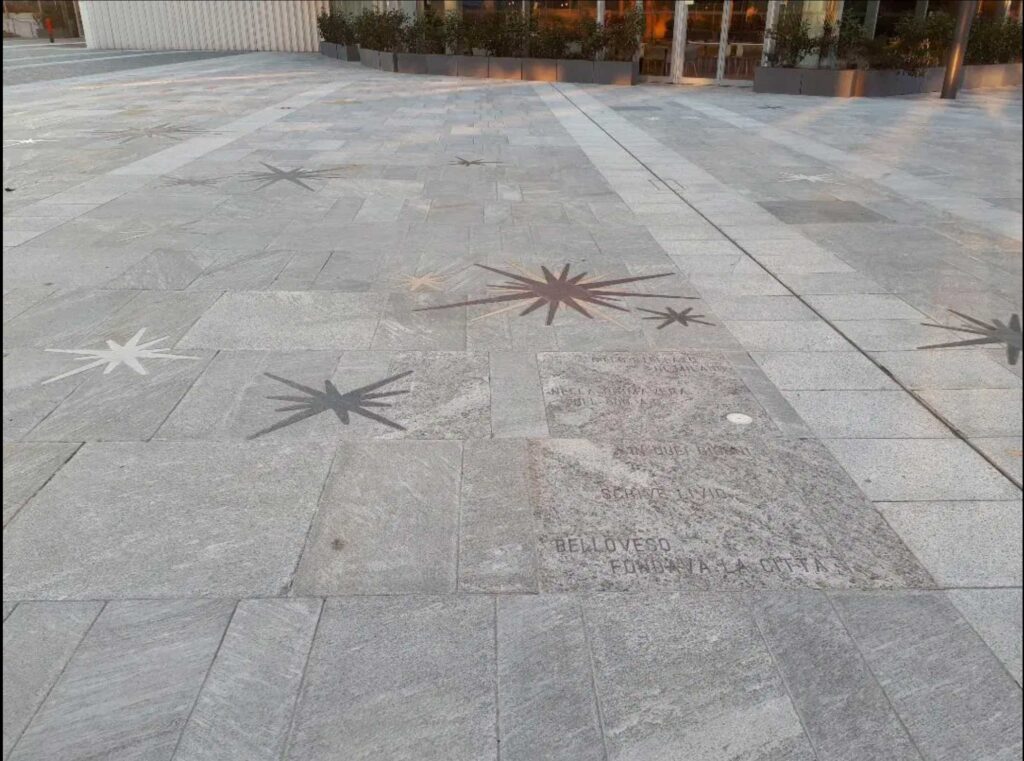
Le opere e le installazioni sono in continuo divenire e movimento, per la Milano Art Week 2018 uno dei più rinomati street artist del mondo, Eron (pseudomino dell’italianissimo Davide Salvadei) ha realizzato il W.A.L.L., che sta per Walls Are Love’s Limits, una tra le più grandi opere d’arte murale al mondo. Circa 120 metri di lunghezza per8 metri di altezza è ricca di suggestioni luminose e finezze pittoriche, inserite con delicatezza nel contesto, in armonia con le architetture e gli spazi verdi. L’artista ha utilizzato contro un muro uno schermo sul quale si snodano i suoi dipinti, da una leggera nebbia si intravedono frammenti di vegetazione, mentre un filo spinato corre lungo tutta la superficie, al centro l’alone del sole si fa strada tra nebbia e filo spinato e si apre a forma di cuore.
The works and installations are constantly evolving and in motion. For Milan Art Week 2018, one of the world’s most renowned street artists, Eron (the pseudonym of the Italian artist Davide Salvadei), created the W.A.L.L., which stands for “Walls Are Love’s Limits.” It is one of the largest mural artworks in the world, measuring approximately 120 meters in length and 8 meters in height. The mural is rich in luminous suggestions and painterly finesse, delicately integrated into the surroundings, in harmony with the architecture and green spaces.
The artist used a screen against a wall to display his paintings. Through a light mist, fragments of vegetation are glimpsed, while a barbed wire runs along the entire surface. In the center, the halo of the sun makes its way through the mist and barbed wire, opening up in the shape of a heart.
Nei pressi della Torre Isozaki Allianz è presente anche un’area fitness all’aperto, una palestra con pavimento gommato completa di attrezzature fisse.
Near the Isozaki Allianz Tower, there is also an outdoor fitness area, a gym with a rubberized floor and complete with fixed equipment.
A completamento di Citylife era previsto il Museo d’Arte Contemporanea, sempre su progetto di Libeskind, consistente in un edificio a pianta quadrata che, con un movimento di torsione, terminava a pianta circolare completamente terrazzata. Questo progetto è stato attualmente accantonato.
To complement Citylife, the Contemporary Art Museum was planned, also designed by Libeskind. It consisted of a square-shaped building that, with a twisting movement, ended in a fully terraced circular plan. However, this project has currently been set aside or abandoned.

https://it.wikipedia.org/wiki/Bjarke_Ingels_Group
https://www.artlinemilano.com/
Nuovo aggiornamento ©Giusy Baffi 2023
©Giusy Baffi 2020 – (pubblicato parzialmente su Artevitae.it. 27 aprile 2017 https://artevitae.it/citylife-milano-artrevitae/)
© Le foto sono state reperite da libri e cataloghi d’asta o in rete e possono essere soggette a copyright. L’uso delle immagini e dei video sono esclusivamente a scopo esplicativo. L’intento di questo blog è solo didattico e informativo. Qualora la pubblicazione delle immagini violasse eventuali diritti d’autore si prega di volerlo comunicare via email a info@giusybaffi.com e saranno prontamente rimosse oppure citato il copyright ©.
© Il presente sito https://www.giusybaffi.com/ non è a scopo di lucro e qualsiasi sfruttamento, riproduzione, duplicazione, copiatura o distribuzione dei Contenuti del Sito per fini commerciali è vietata.
©Photos have been sourced from books and auction catalogs or online and may be subject to copyright. The use of images and videos are for explanatory purposes only. This website and blog claim no credit for any image posted unless otherwise noted. Images on this website and blog are copyrighted to its respectful owners. If there is an image appearing on this blog and website that belongs to you and do not wish for it to appear on this site, please email to info@giusybaffi.com and it will be promptly removed or copyright © cited.
© This site https://www.giusybaffi.com/ is not for profit and any exploitation, reproduction, duplication, copying or distribution of the Site Content for commercial purposes is prohibited.
